Posts Tagged: wildlife photography
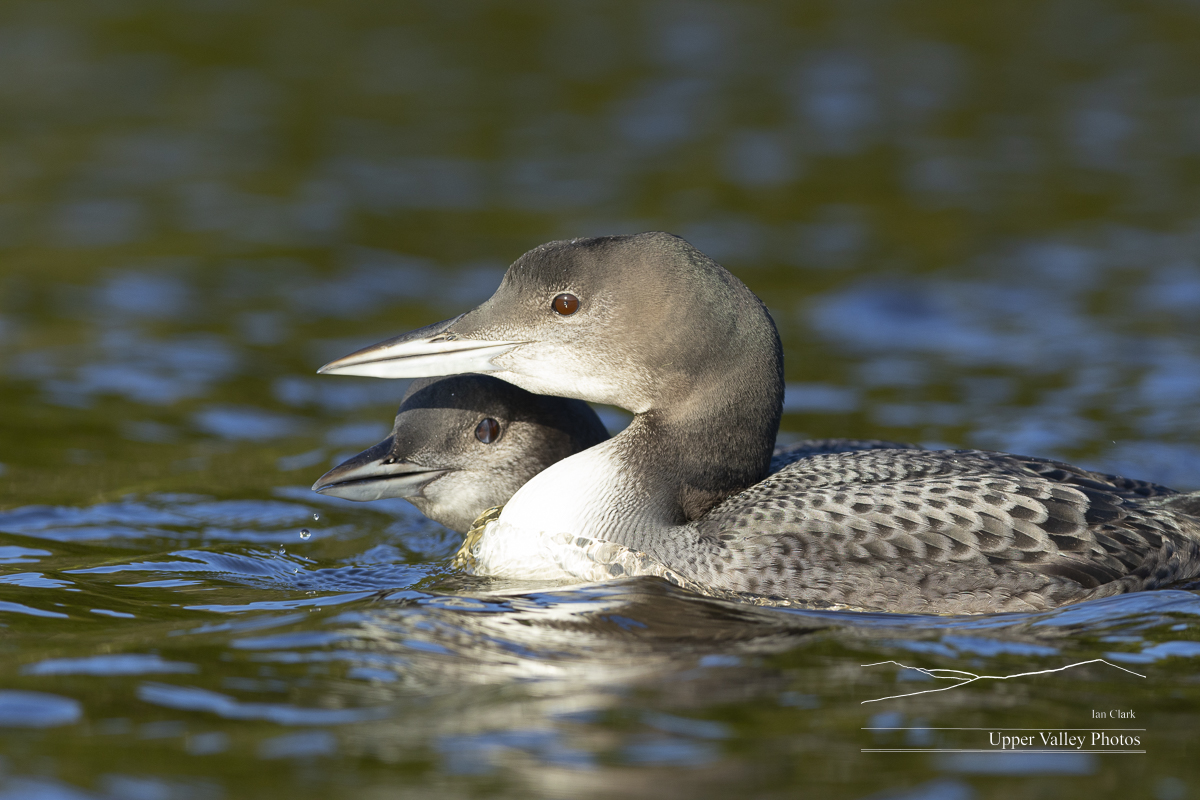

Loon Chicks at 10 Weeks
Monday morning there were stars above and a thick fog over the river in the valley below. I decided to risk a trip to visit the Eastons. Most of the trip to the pond was slow going through the fog. As I started to climb towards the pond, I rose back above the fog to find a beautiful morning.
Dad was foraging by himself near the boat launch, he paddled in close to hoot softly to me before returning to feasting on crayfish. Mom called a couple times while I was getting the boat in the water. This is the pond where Dad is banded, letting me tell who is who if I can see a leg.

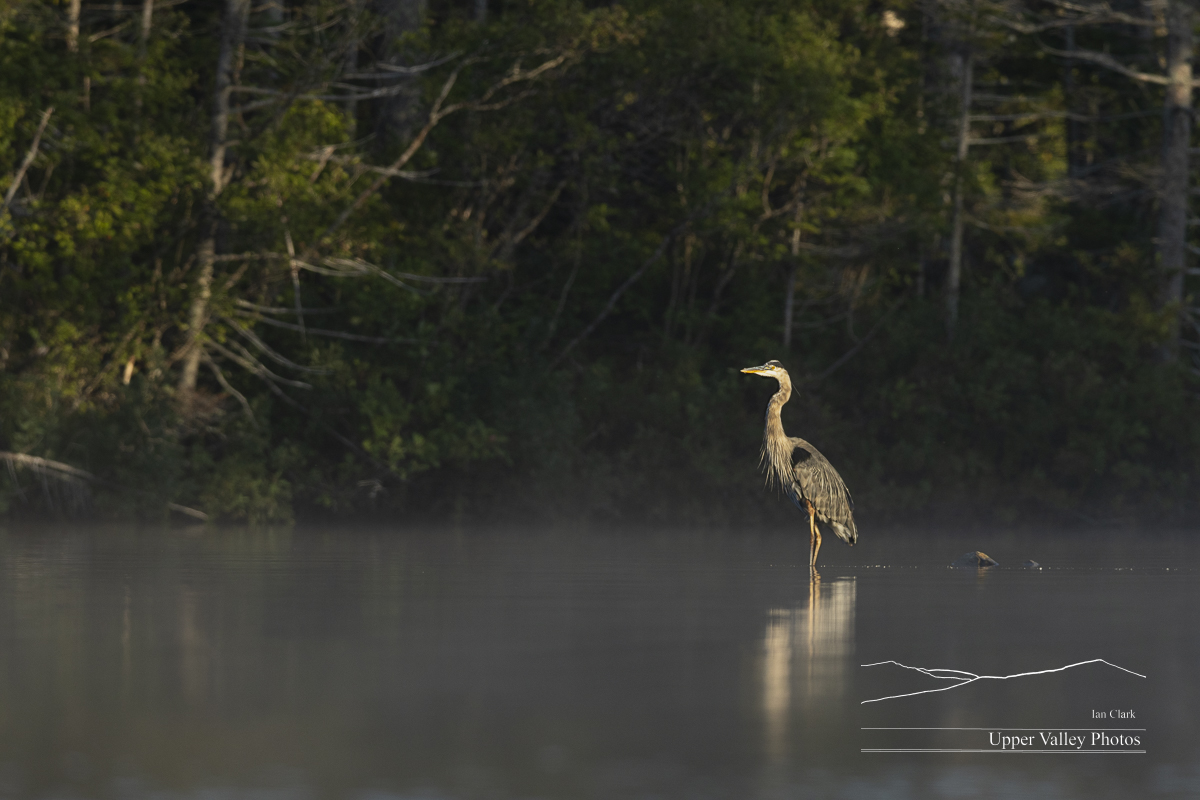
The chicks were keeping mom busy. They’re very demanding, poking and pulling feathers whenever she got near. She didn’t spend much time on the surface, she’d dive quickly when a chick got near. I’m convinced this is why the parents leave the pond before the chicks – they just want some peace.
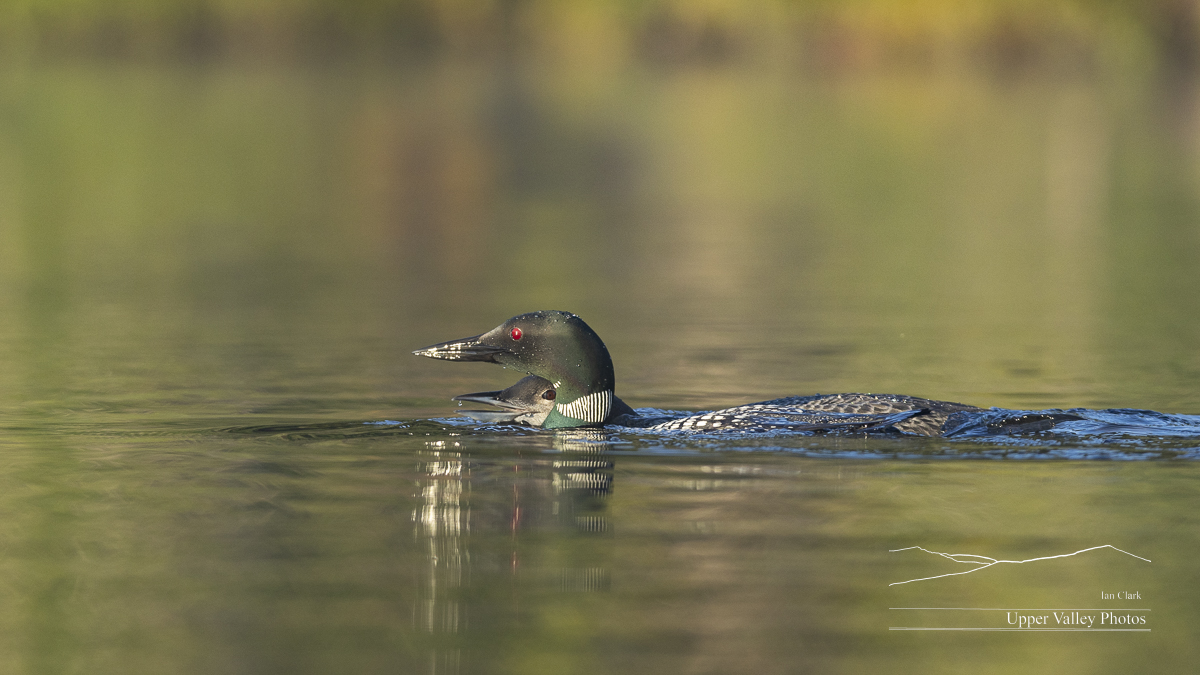
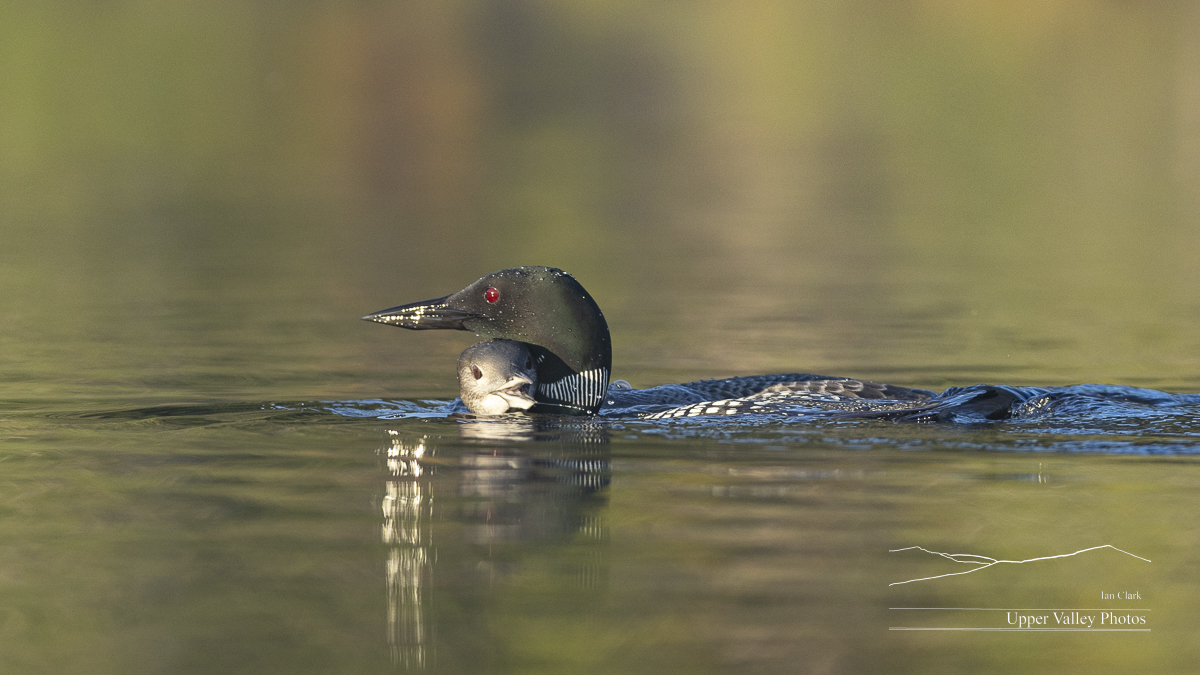

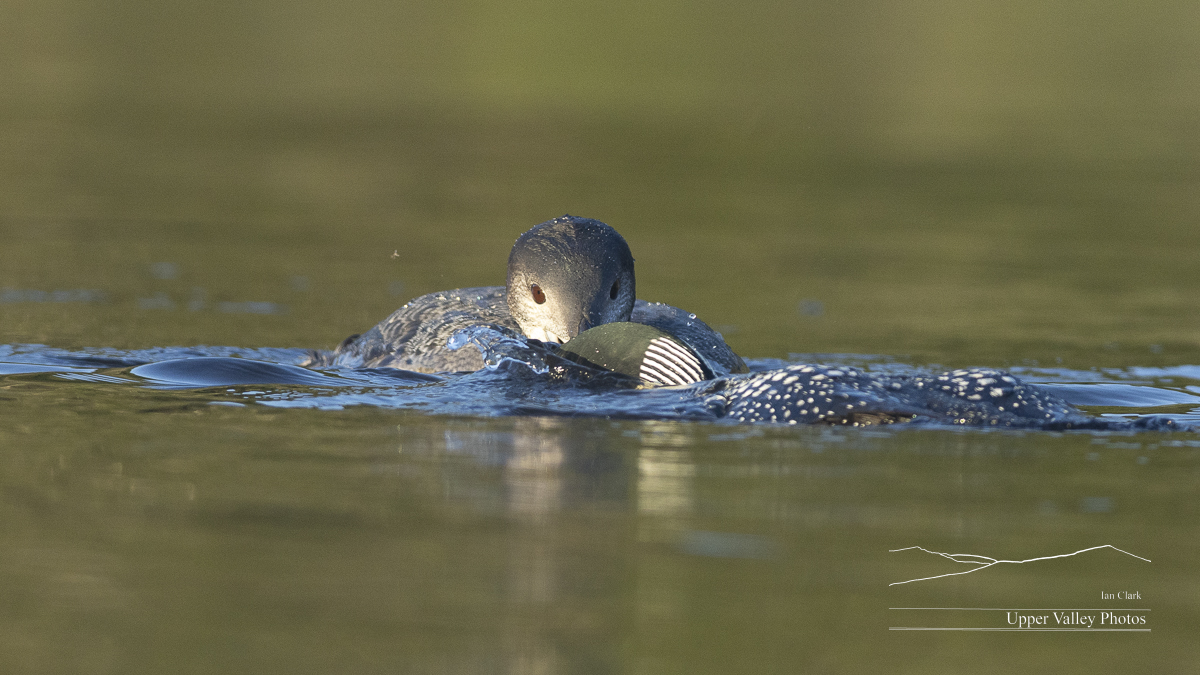

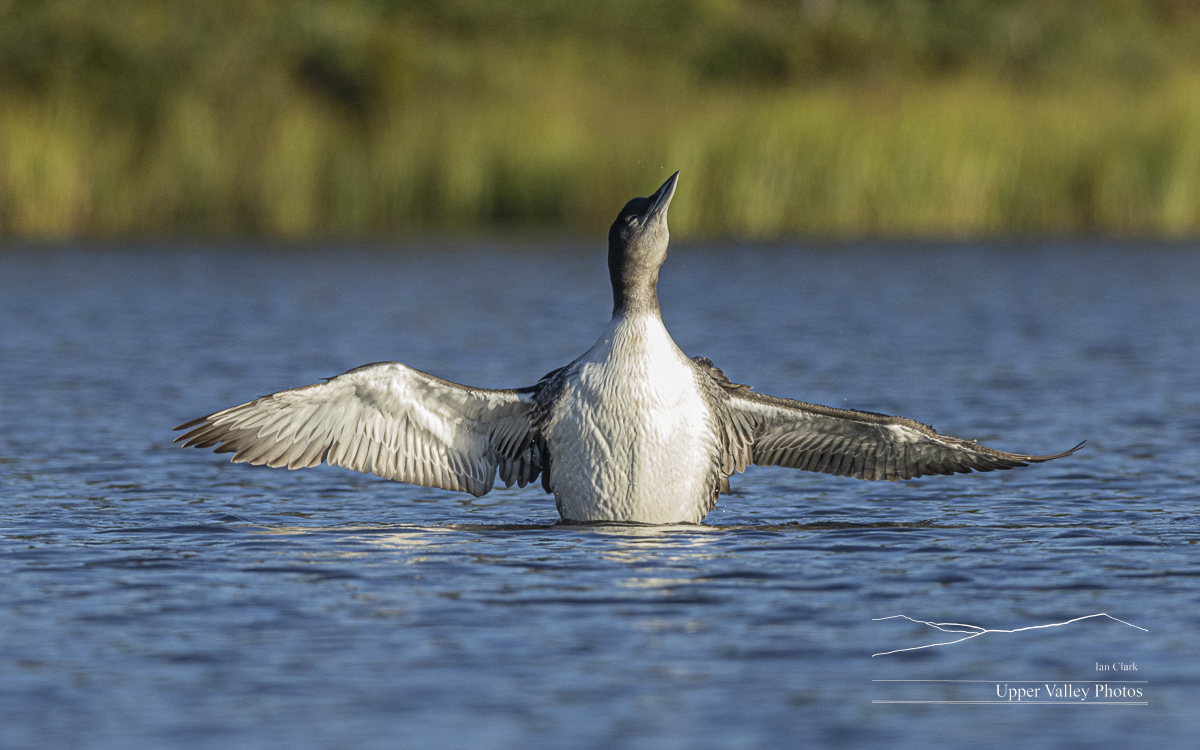
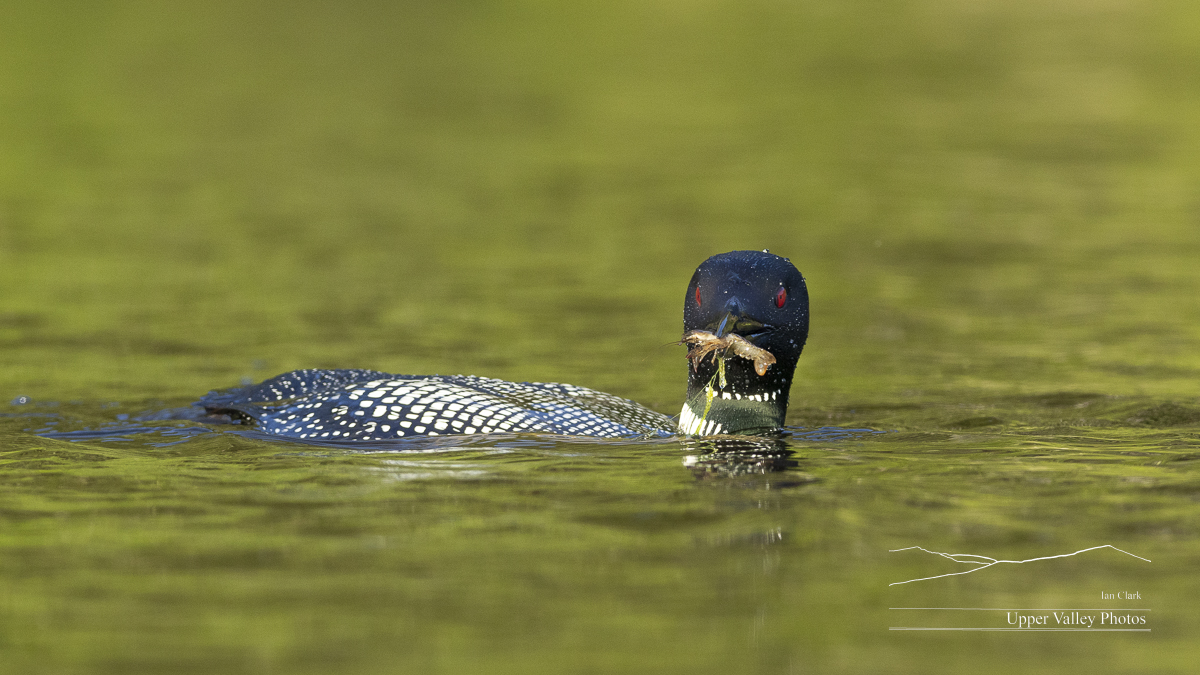


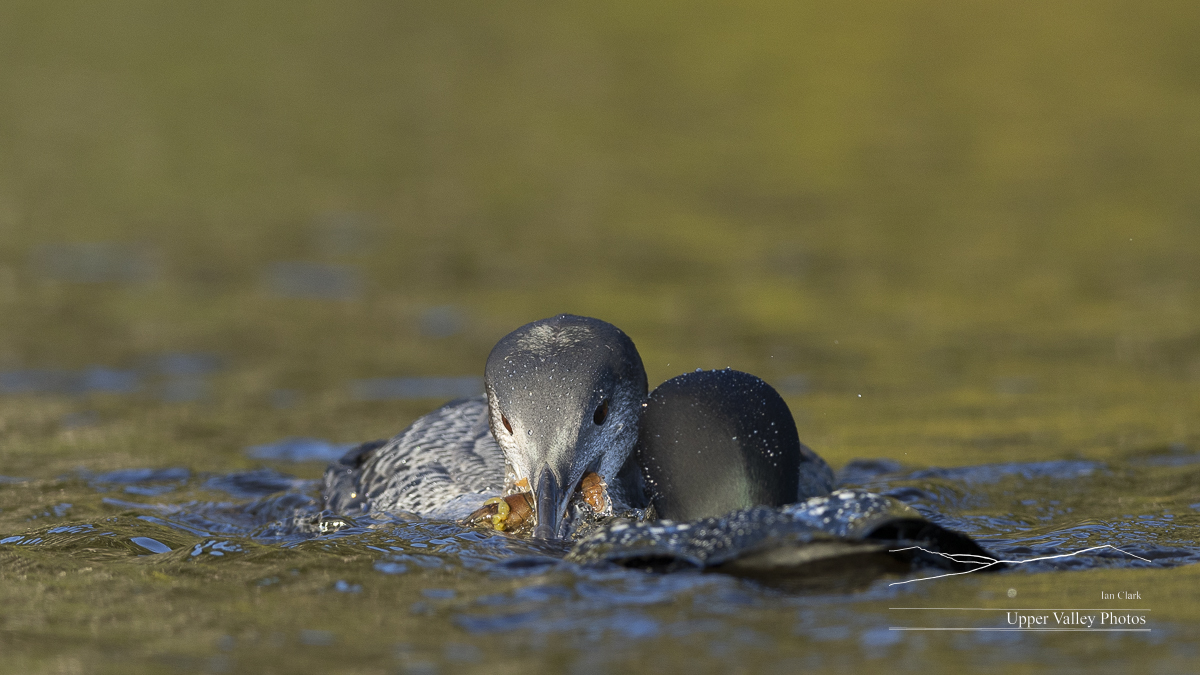
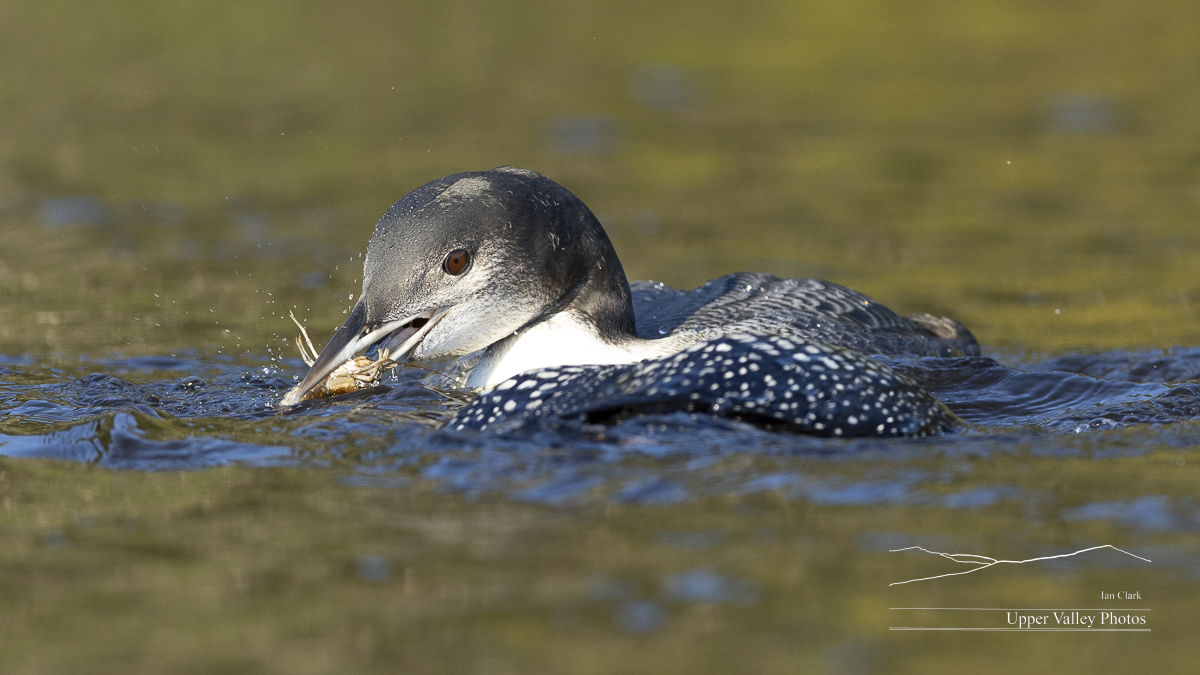

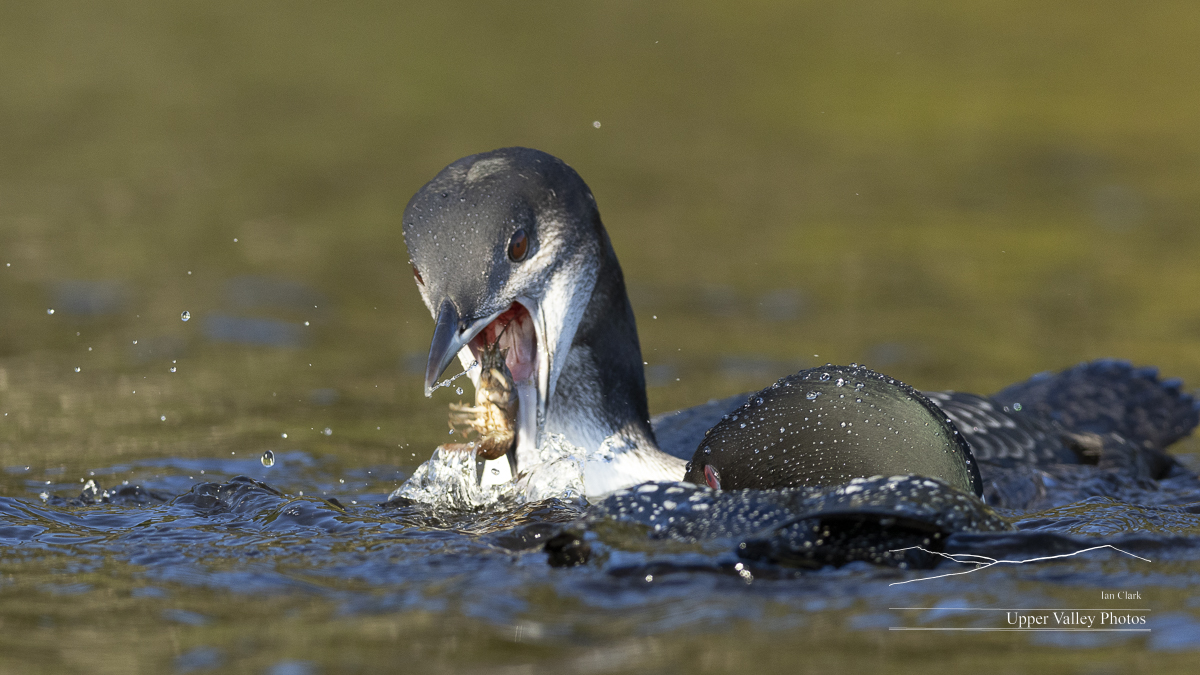

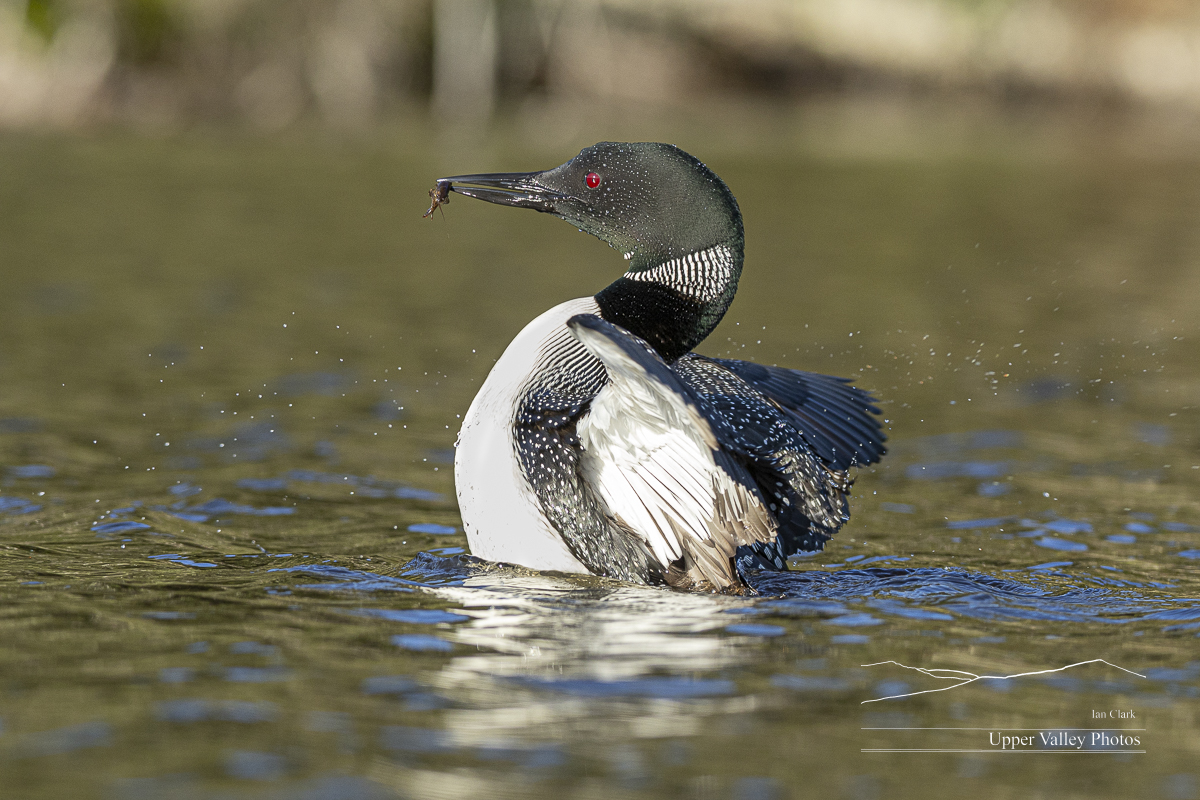


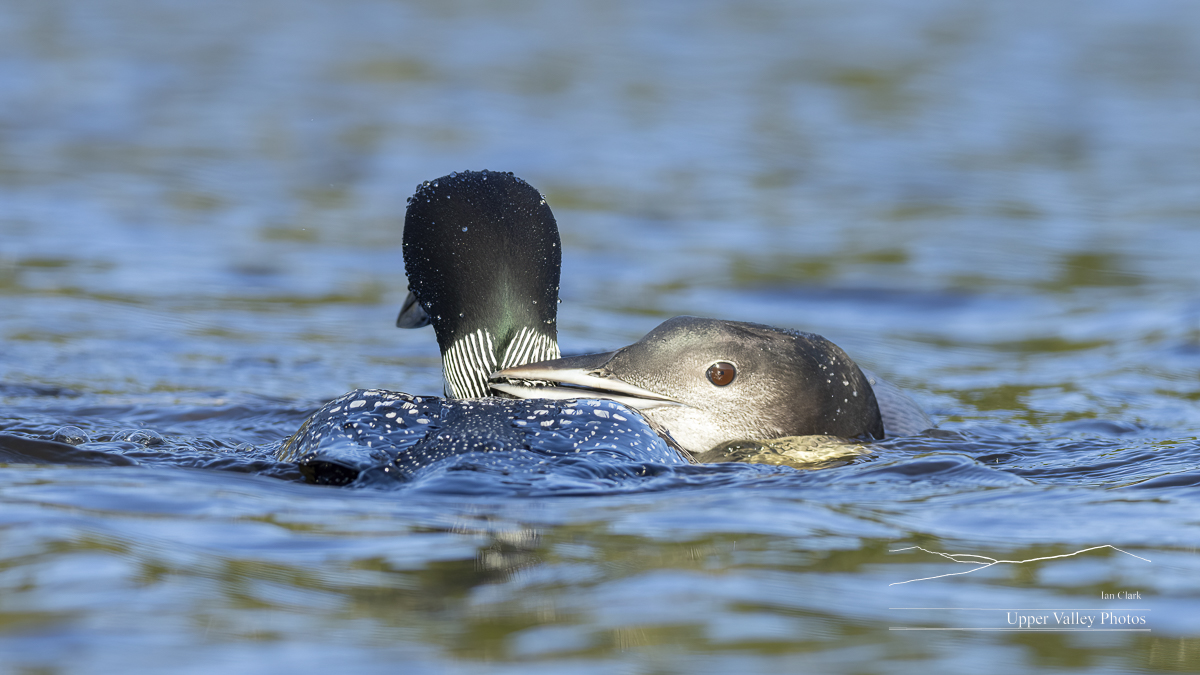
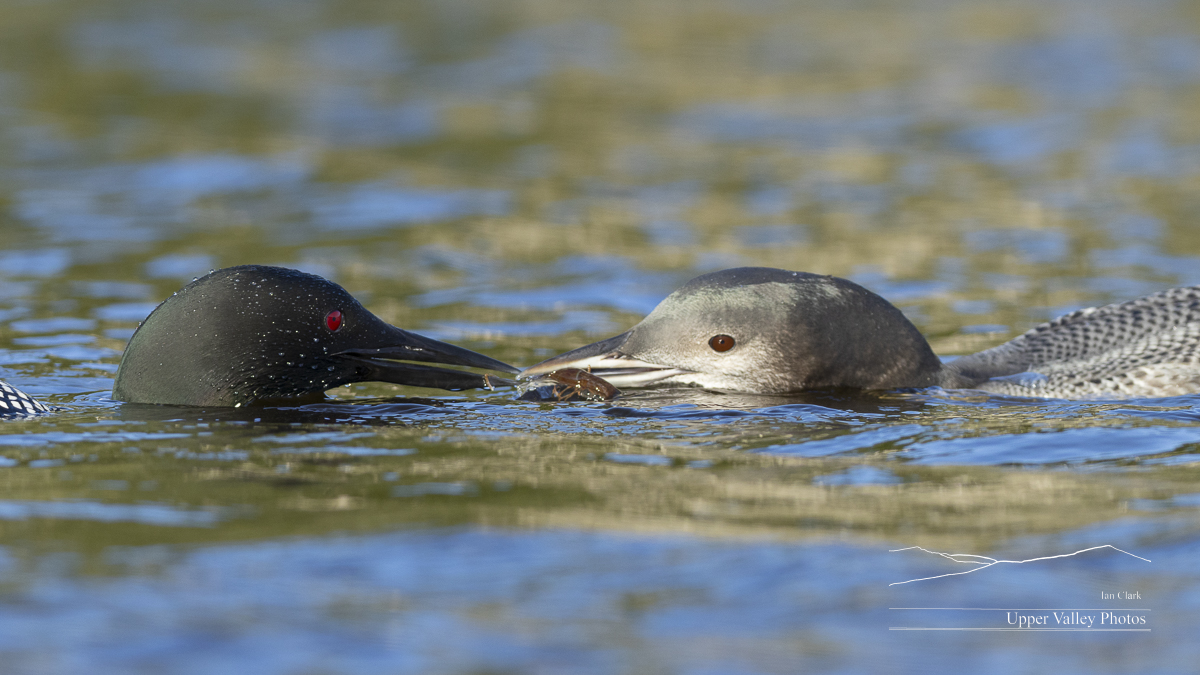
Heading back to the boat launch, I pass dad who is lazily paddling along, seemingly enjoying the peace and quiet on this end of the pond.
I was surprised the fog hadn’t shown up on the pond, there’s usually a period where the pond gets foggy as the fog lifts from the valley. Driving back towards home, I discovered why – the fog was still sitting heavy on the river.
Back at the house, the goldfinches have discovered the thistle I left for them.
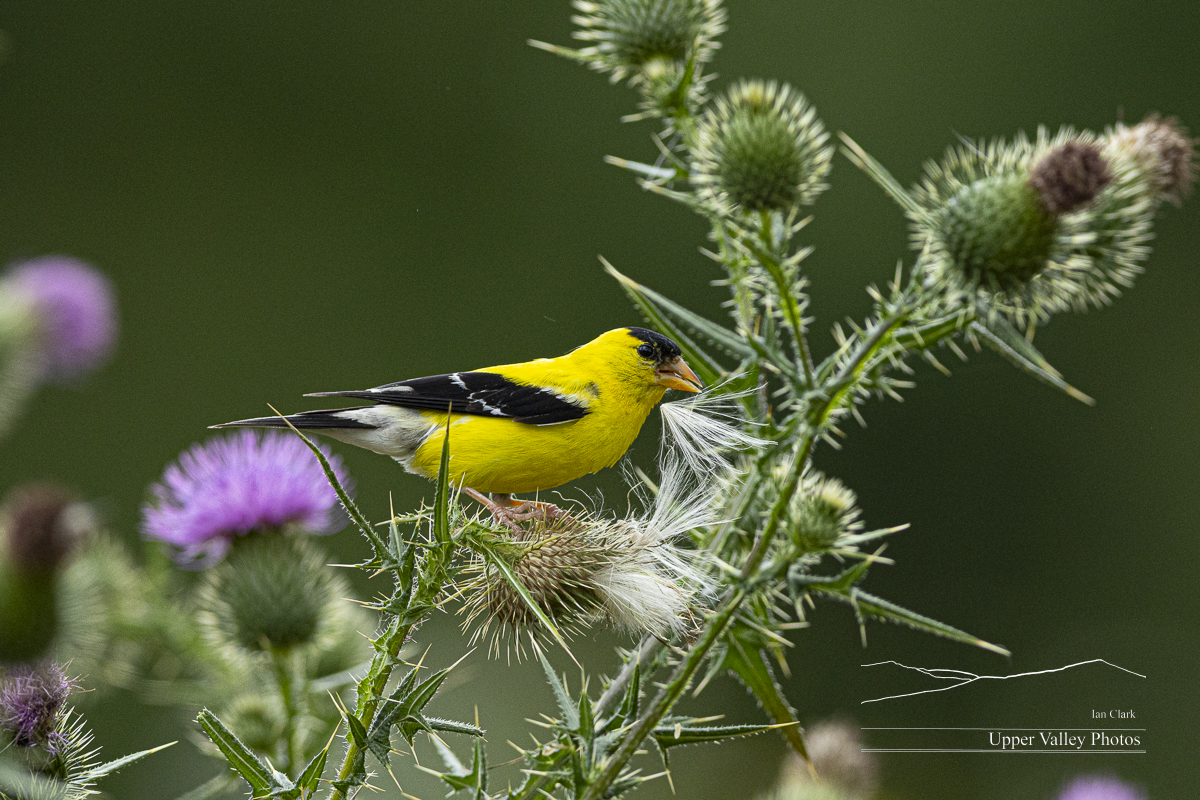


More Time with the Loons
Last weekend, I was able to spend both mornings on the Middleton’s Pond. They’ve got a new neighbor, it looks like they may be having second thoughts about the nest location and they, once again, told an intruder to go away.
I’ll be down at the Paradise City Show in Northampton, MA, over Memorial Day Weekend. I’ll have lots of wildlife prints, including lots of loons, as well as note cards. Stop by to say hello. All the show details here.
Saturday morning found a great egret foraging not far from where the loons nested last year and may again this year. The loons were off in another cove on the pond.
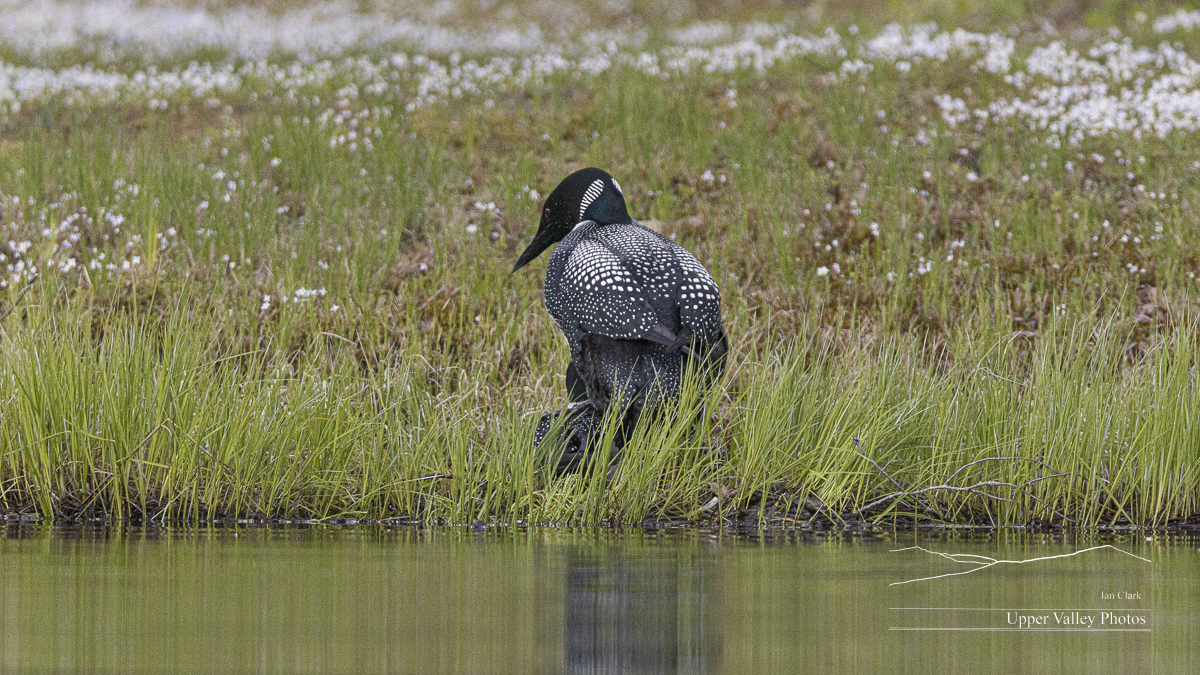
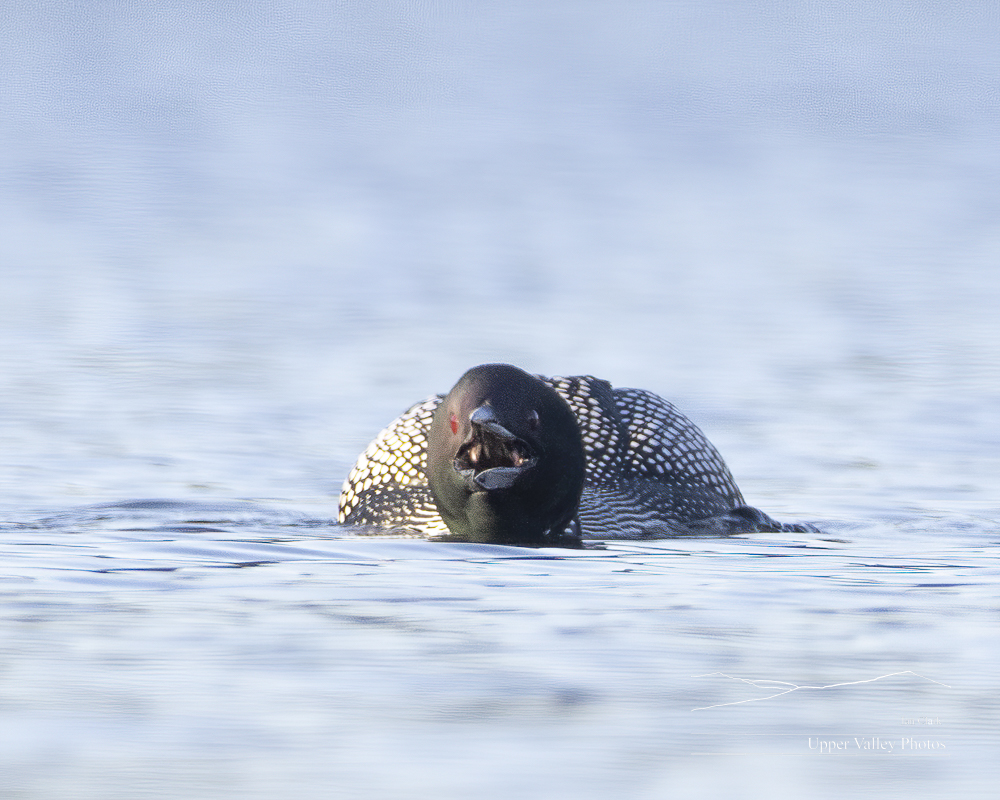

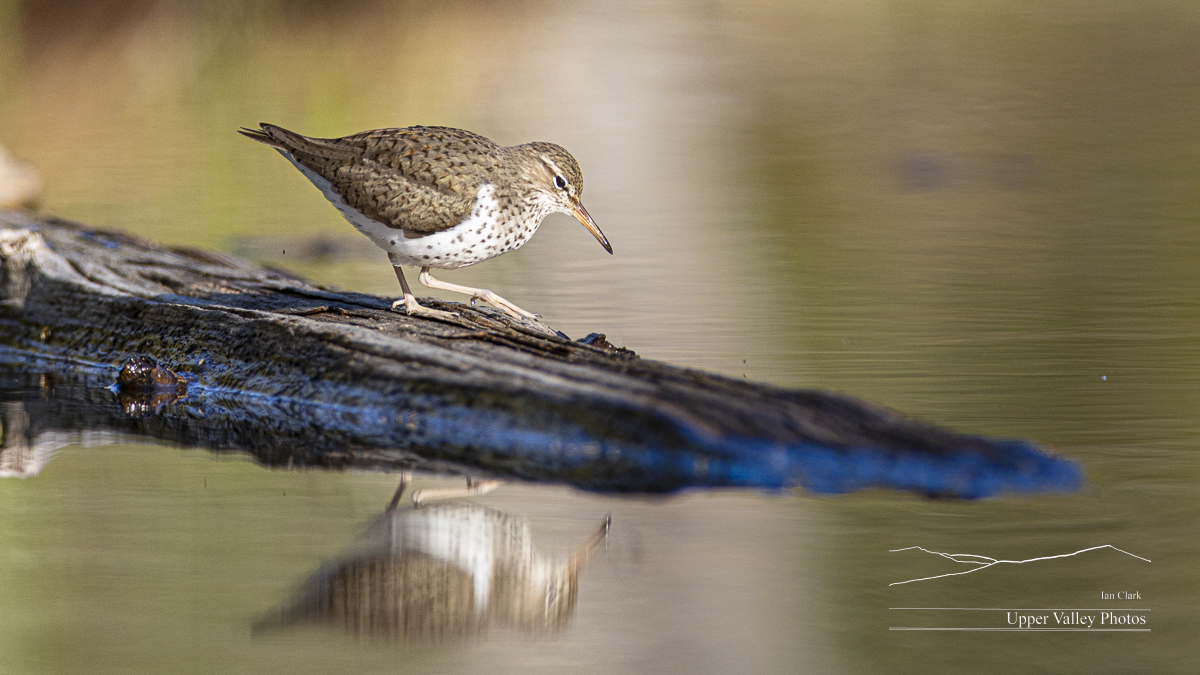
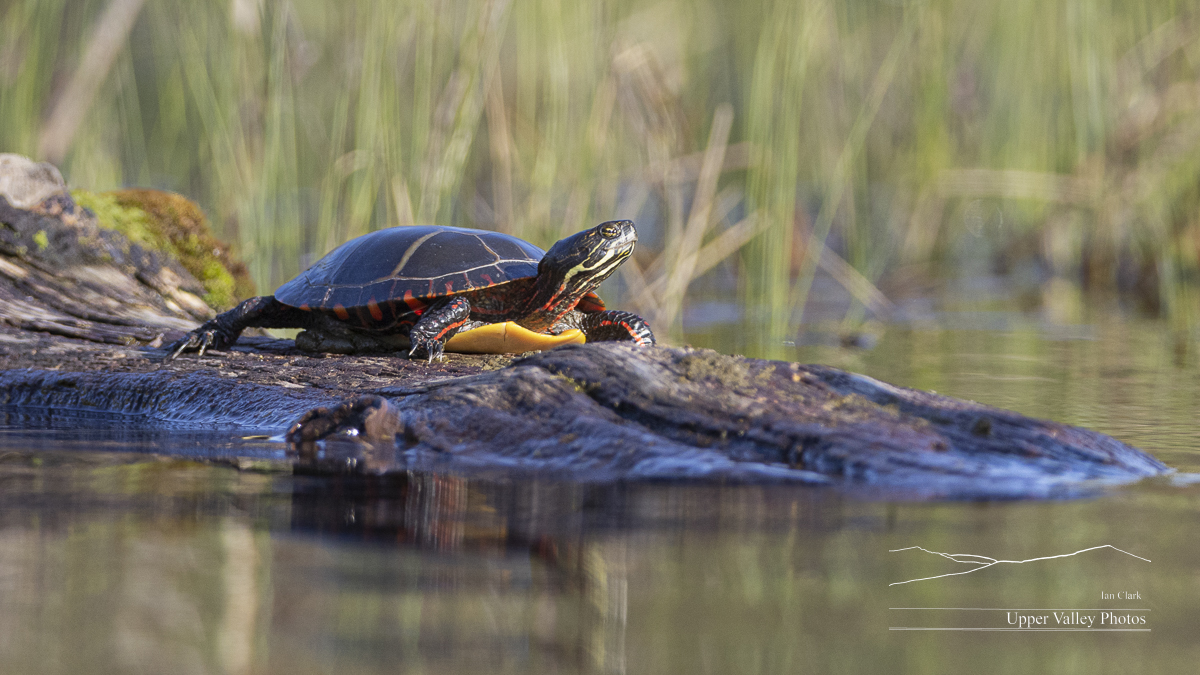
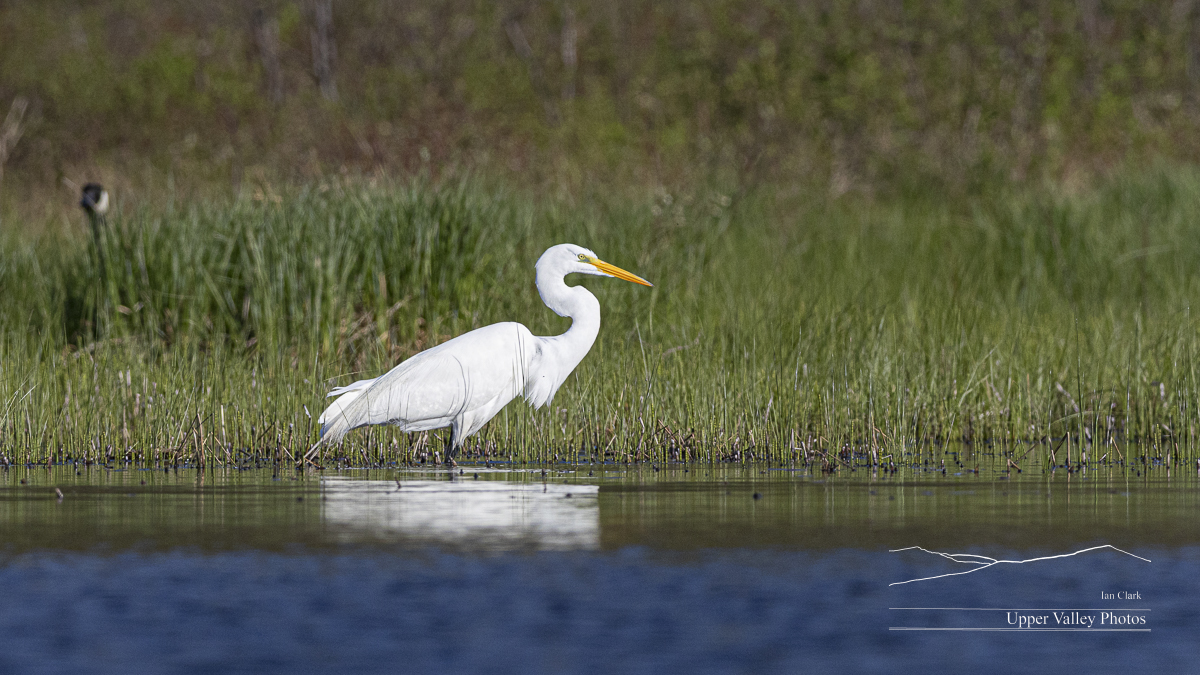
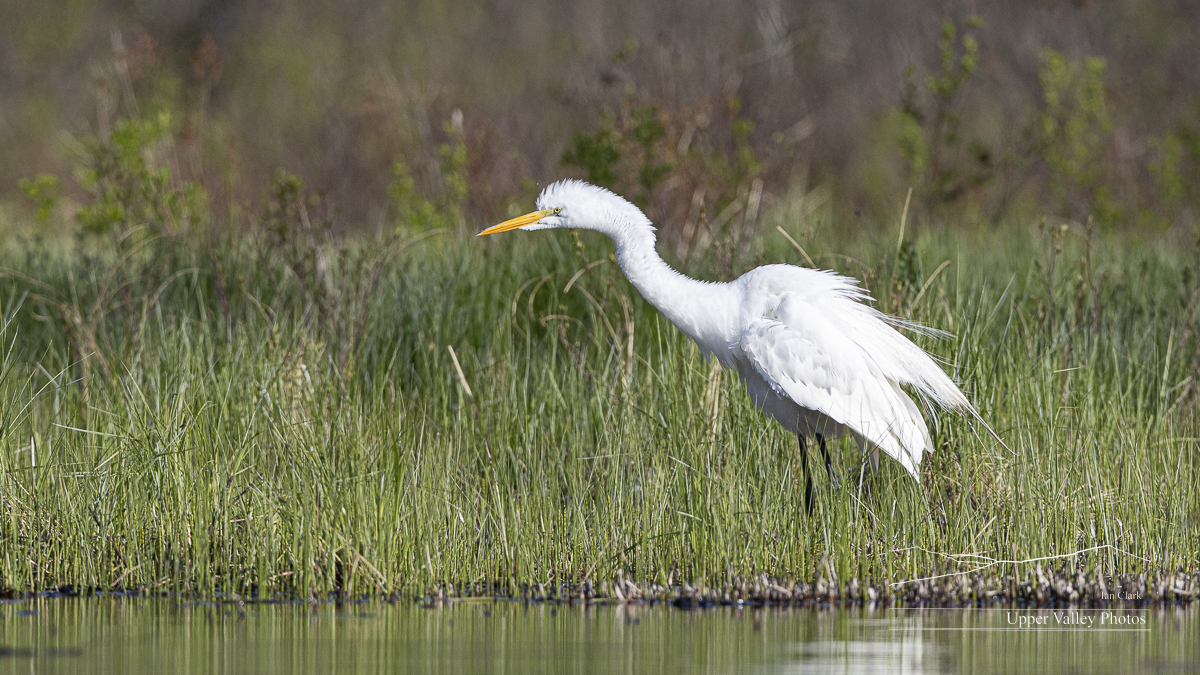
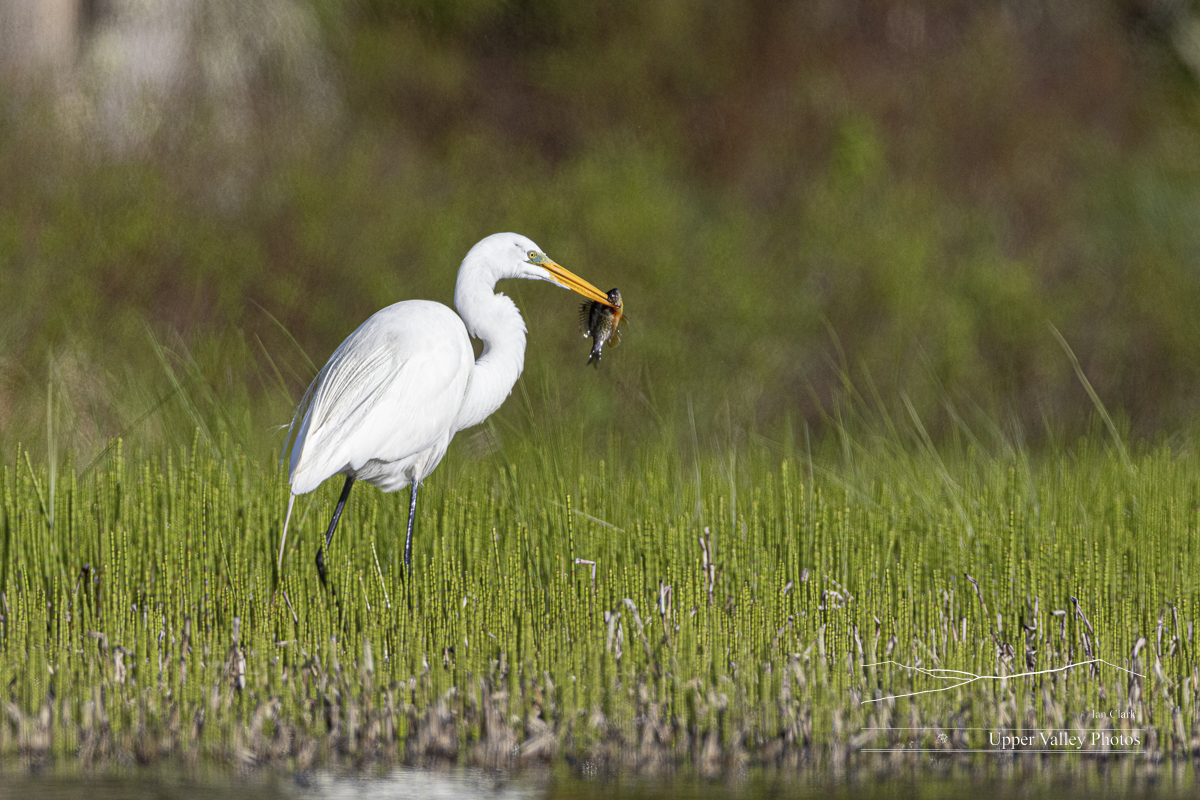
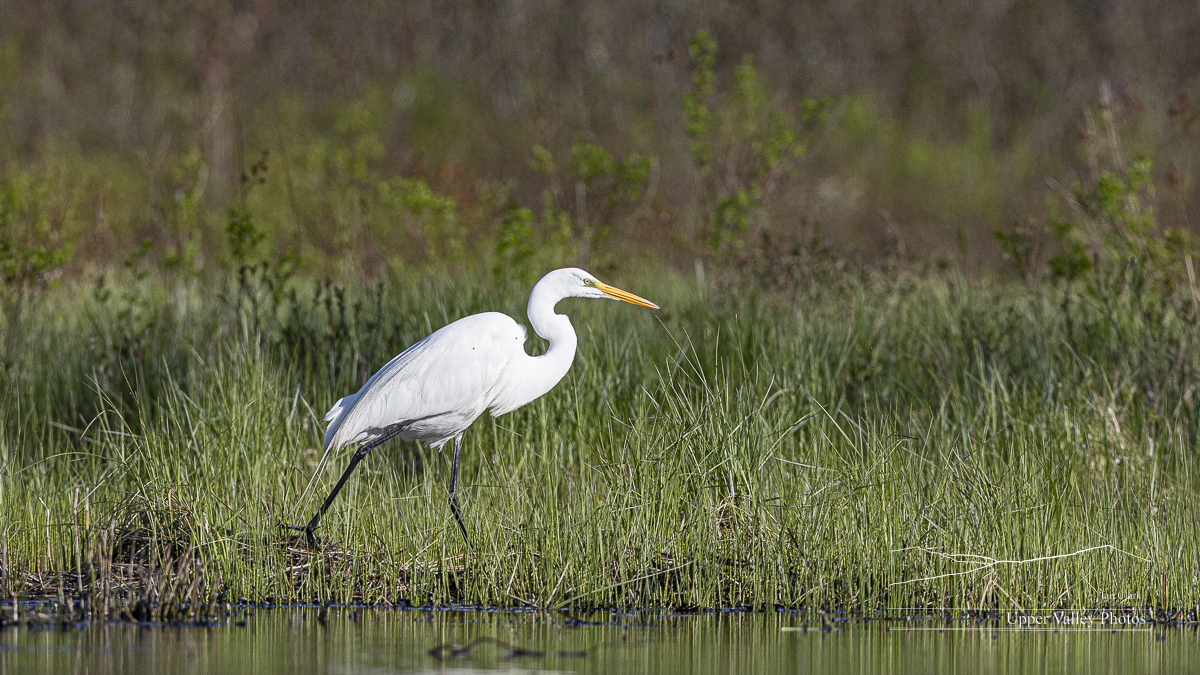



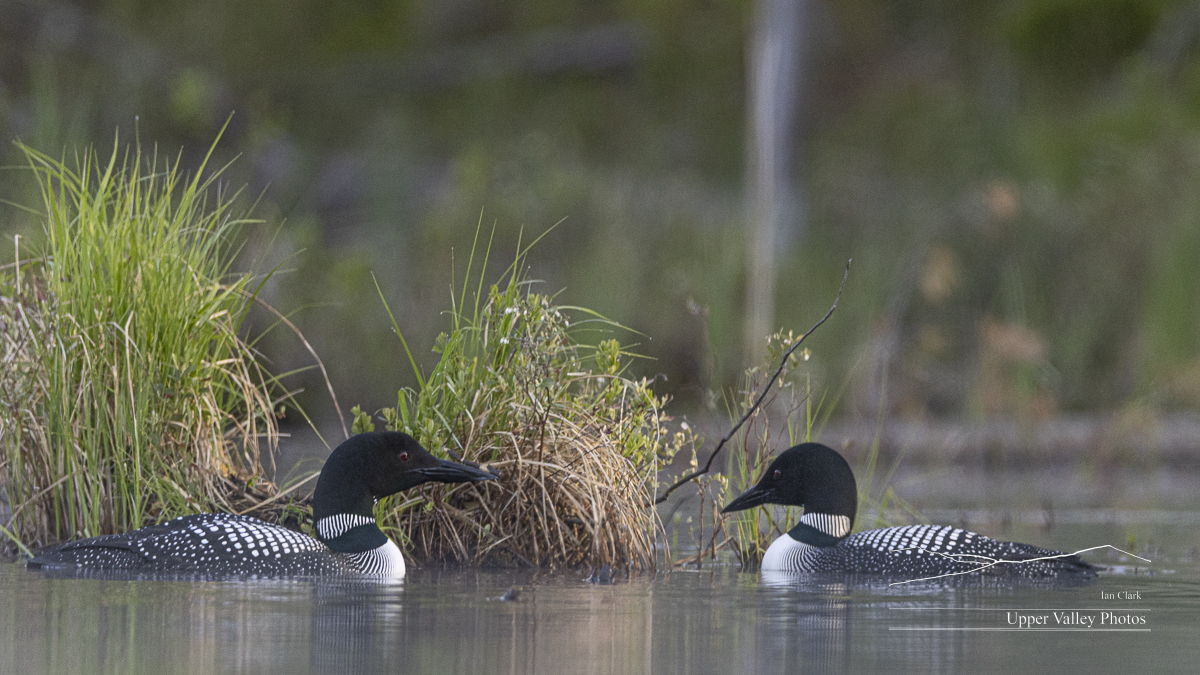

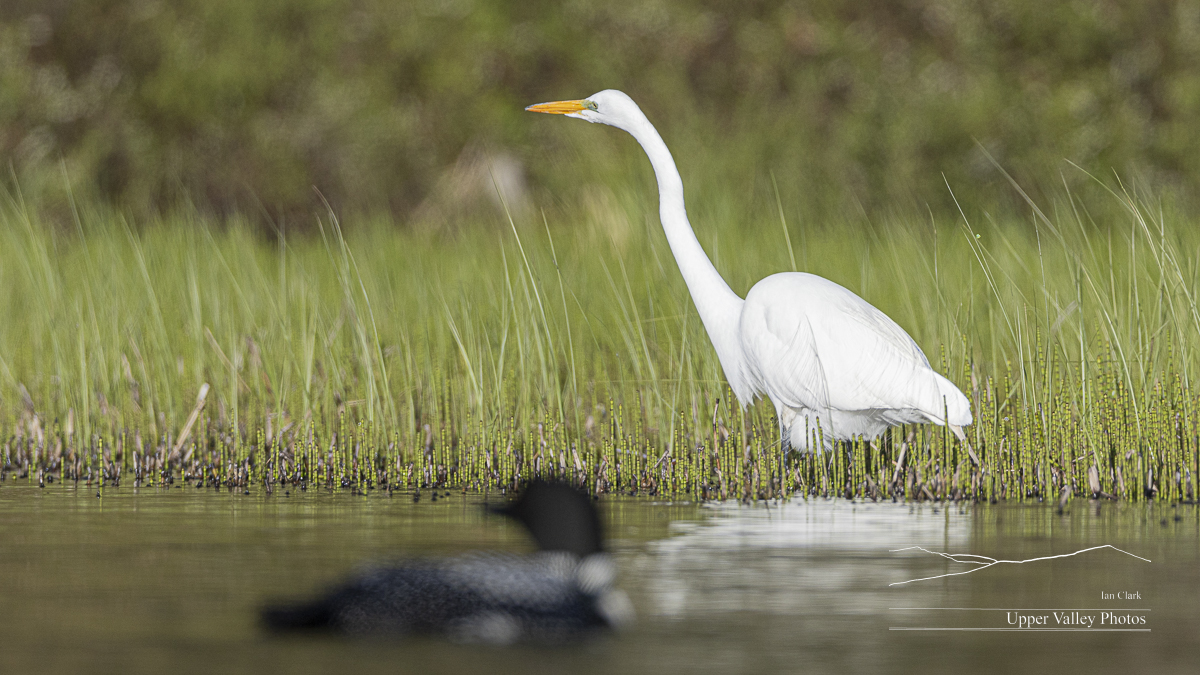
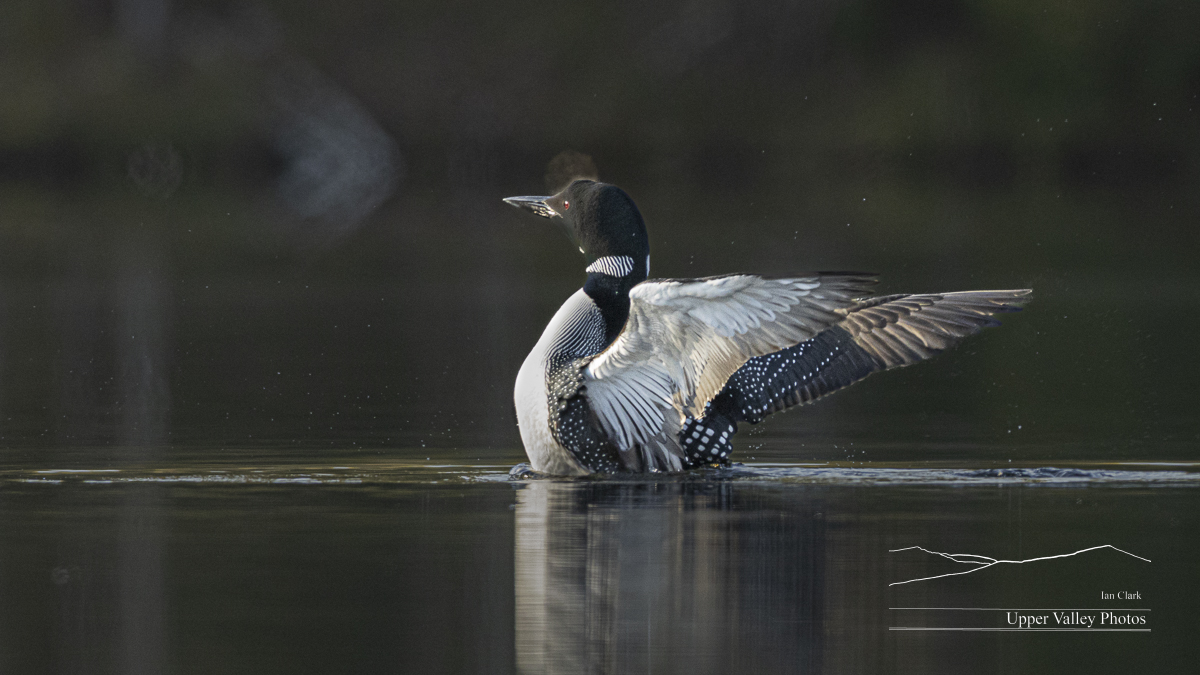
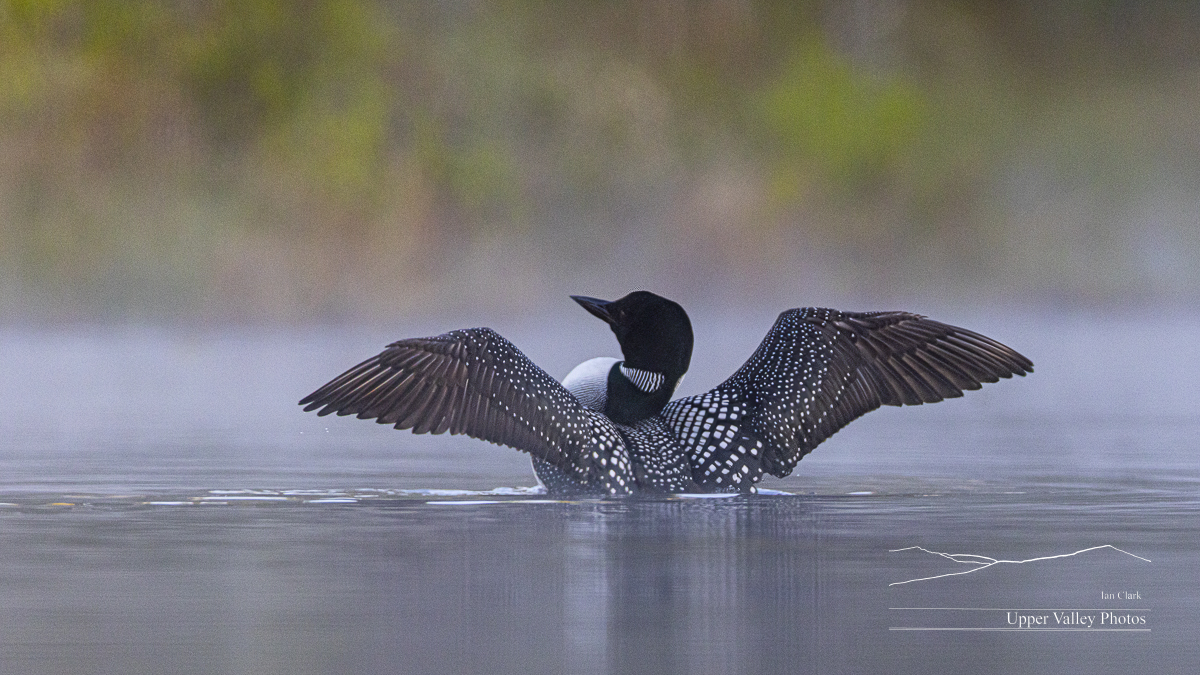
I’m anxiously watching the weather, itching to get back to see if they’ve decided on a nesting site.
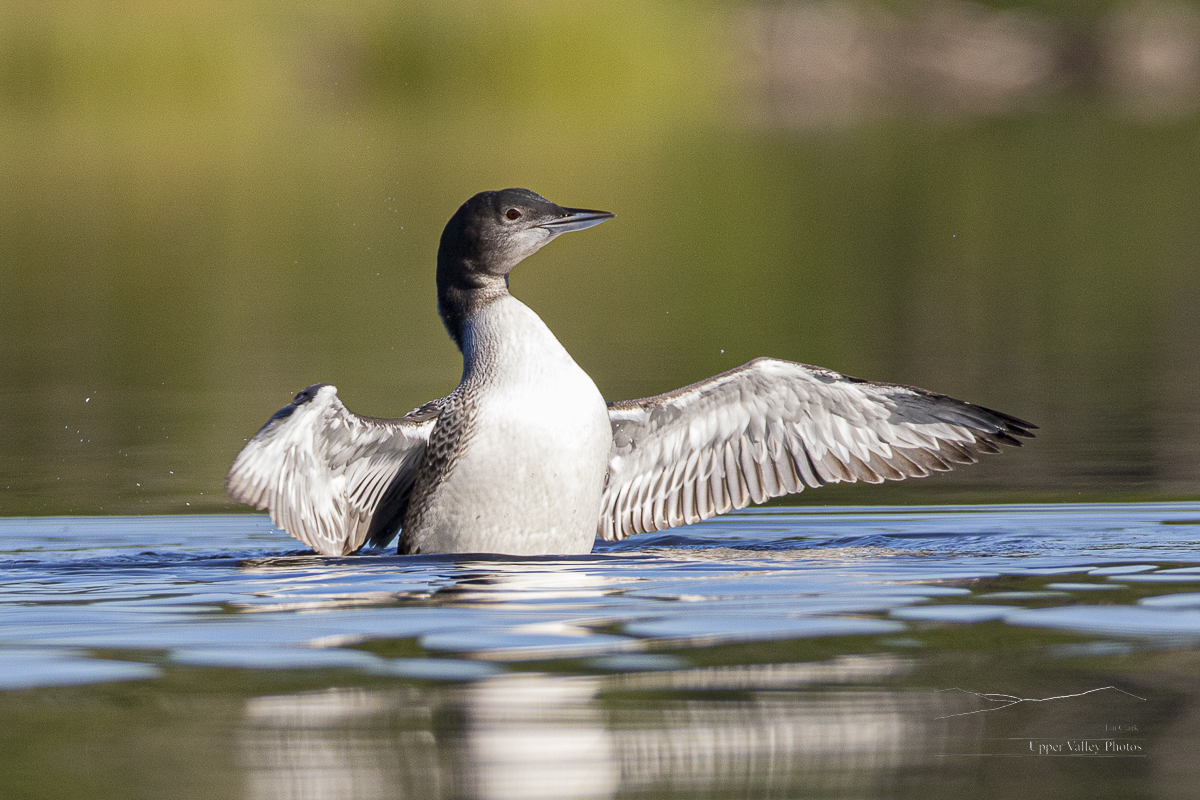
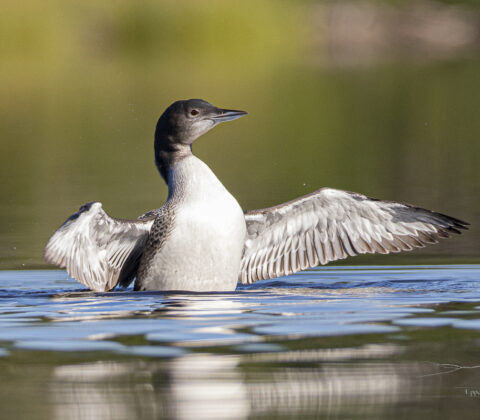
Loon Chicks Now Eight Weeks Old
Thanks to everyone who stopped by at the League of New Hampshire Craftsmen’s Fair. Nice to know people are actually reading the blog. My next show is the Capital Arts Fest, September 24 & 25 in Concord, NH.
Yesterday, I got a chance to check up on the Eastons. The chicks are now eight weeks old and seem to be doing well. They’re big – nearly as big as their parents. Their feathers have grown in and their bills have elongated. They’re diving and foraging for themselves, but still expect their parents to feed them. They’re getting independent, for much of the morning the family was spread out over something like a third of a mile.
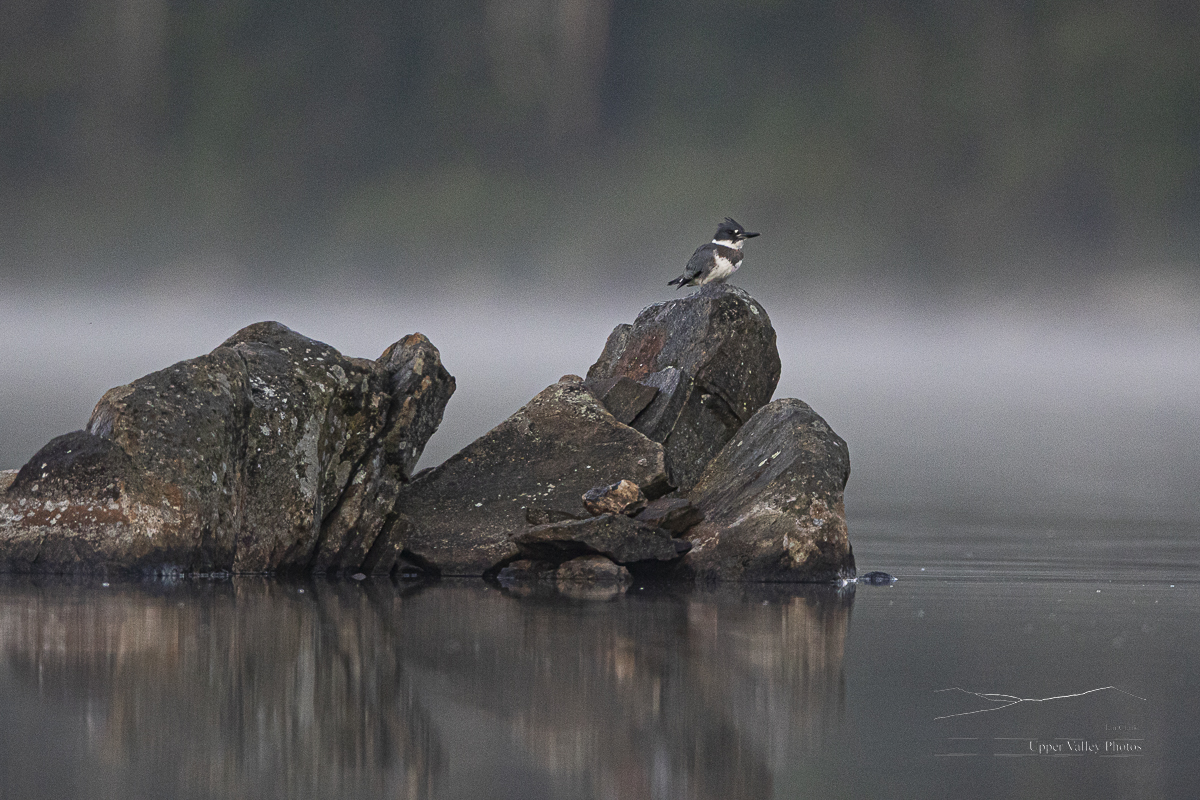
The morning started out with a beaver swimming by the family. The chicks were curious and swam to intercept the beaver. The beaver passed just a couple feet in front of them before circling back and slapping. Both parents rapidly arrived on scene. The parents keep a good eye out under water as the family retreated.
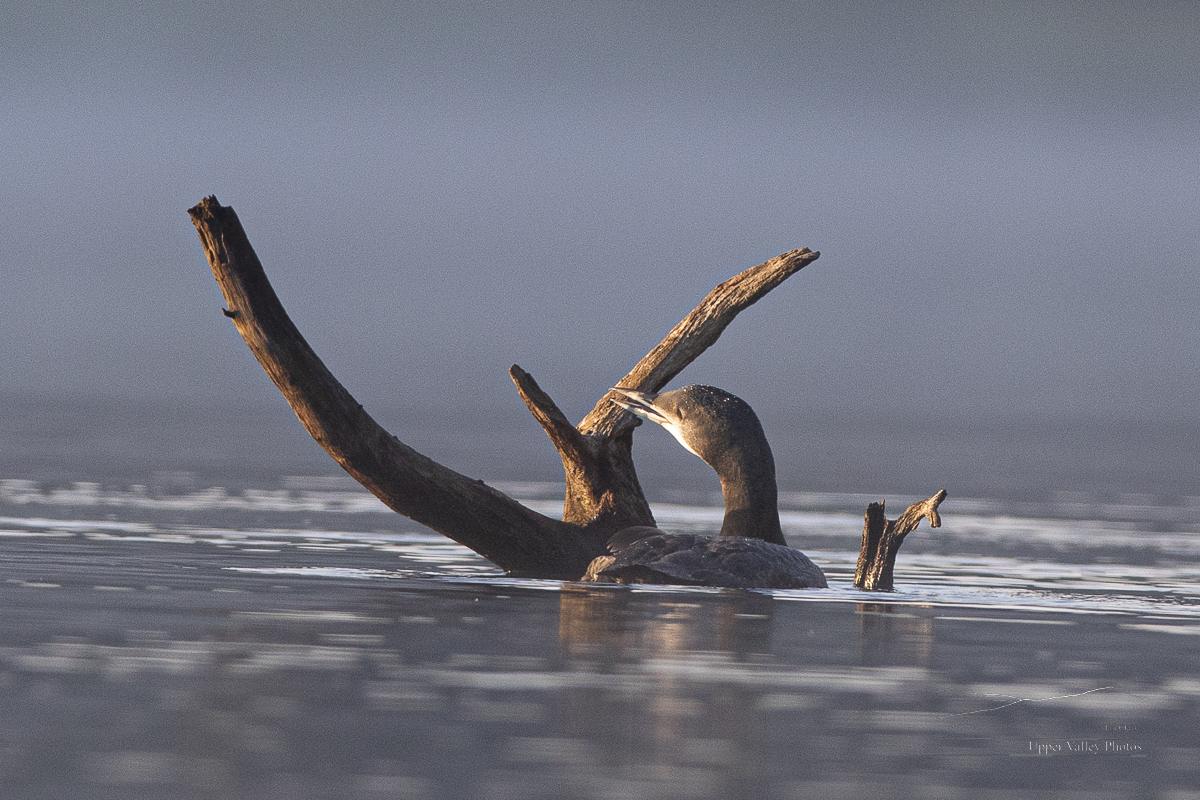
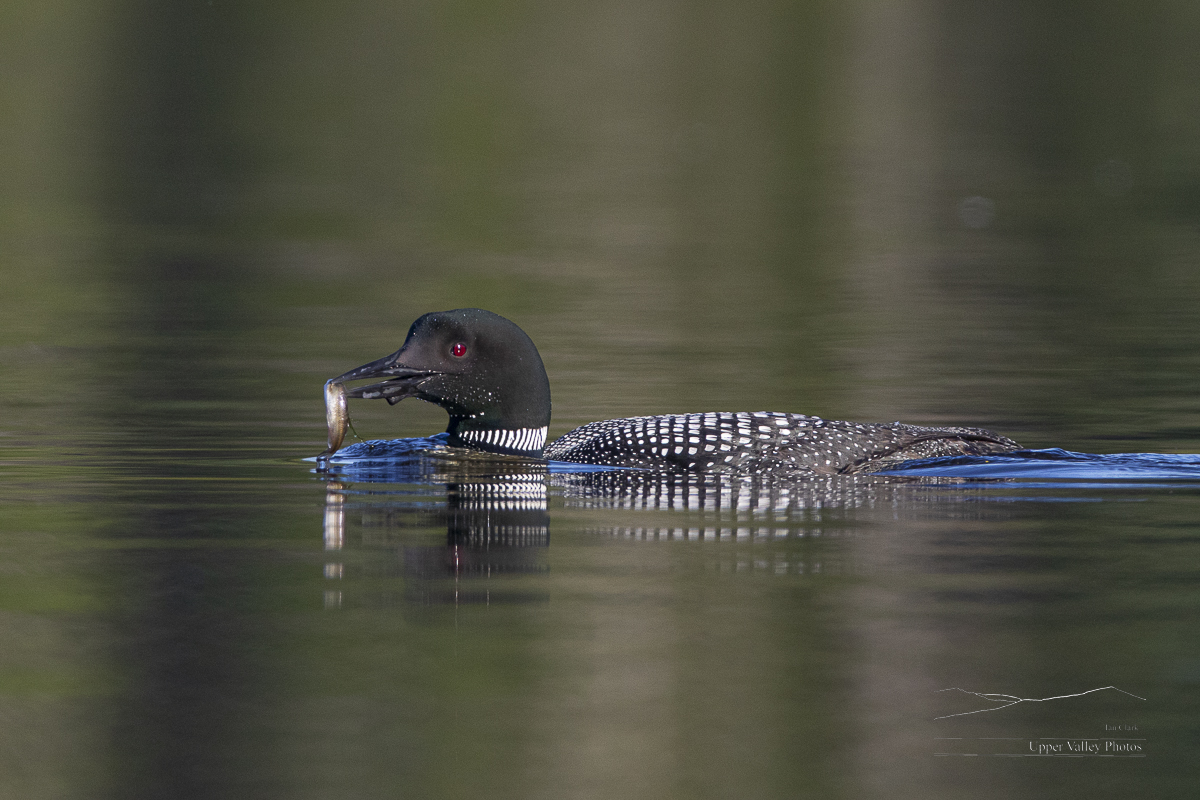
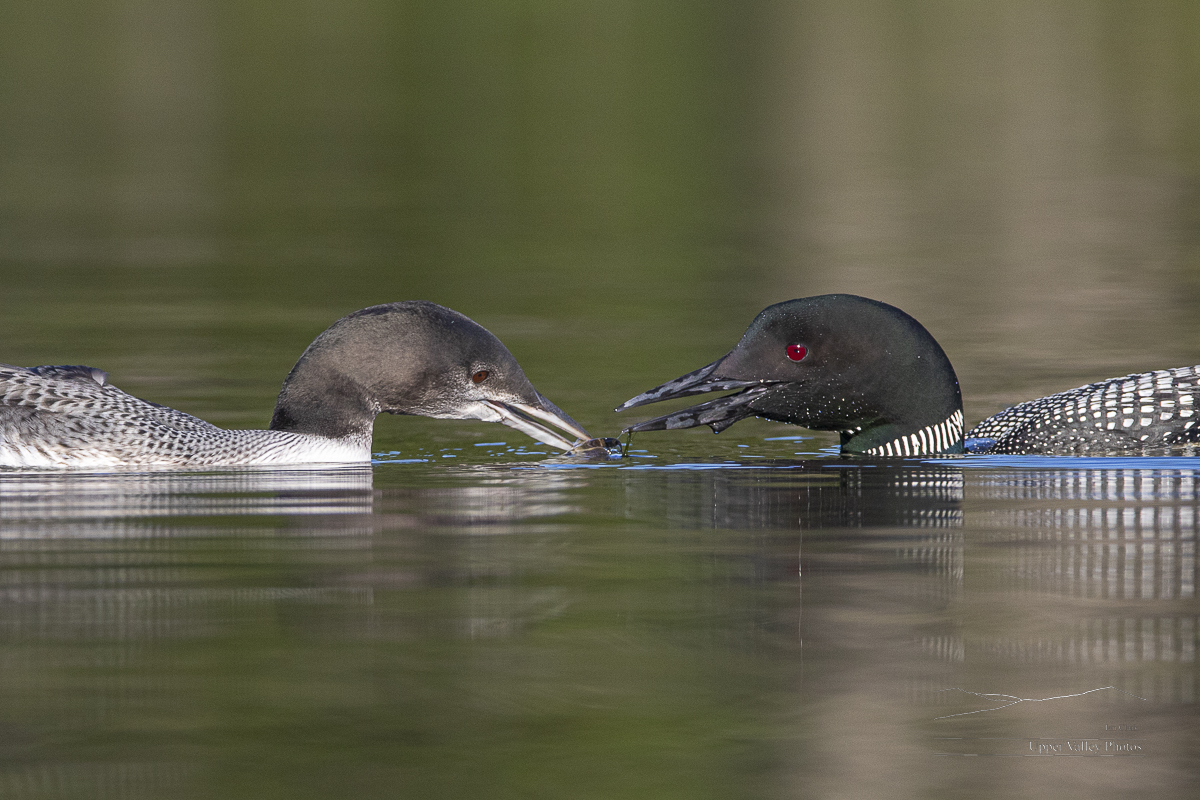


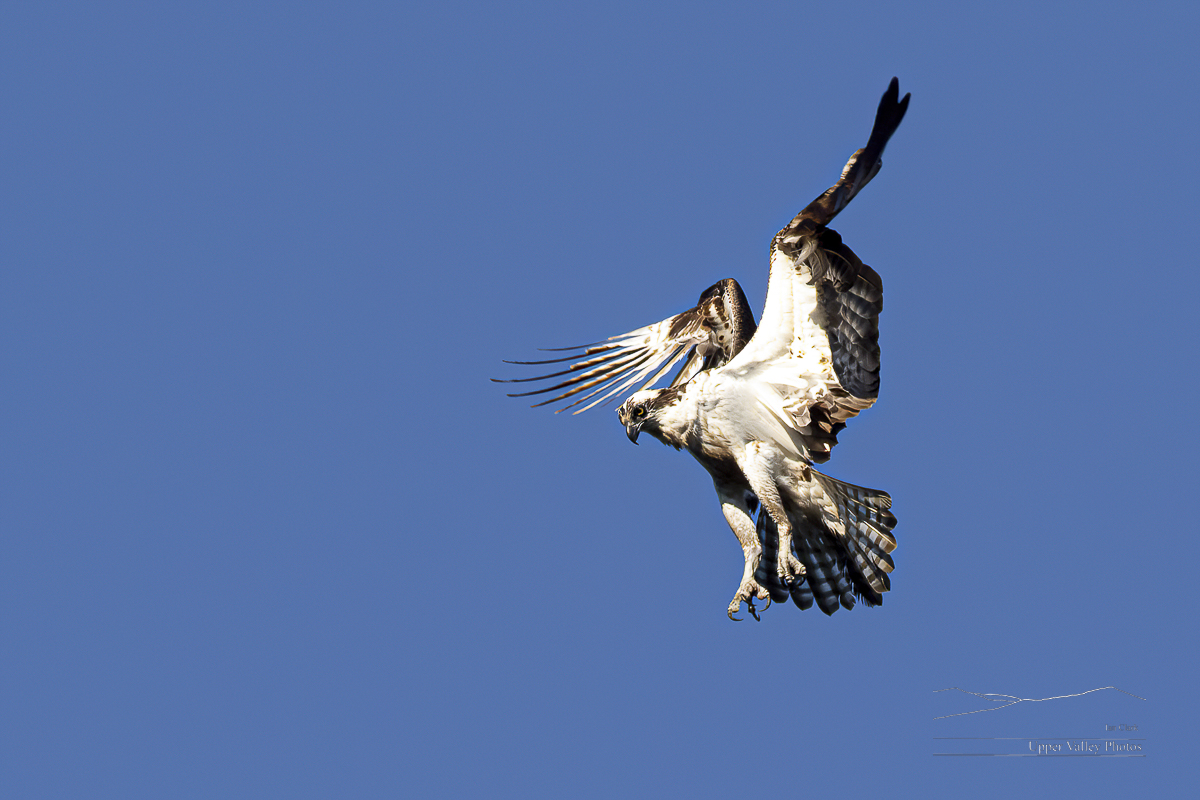
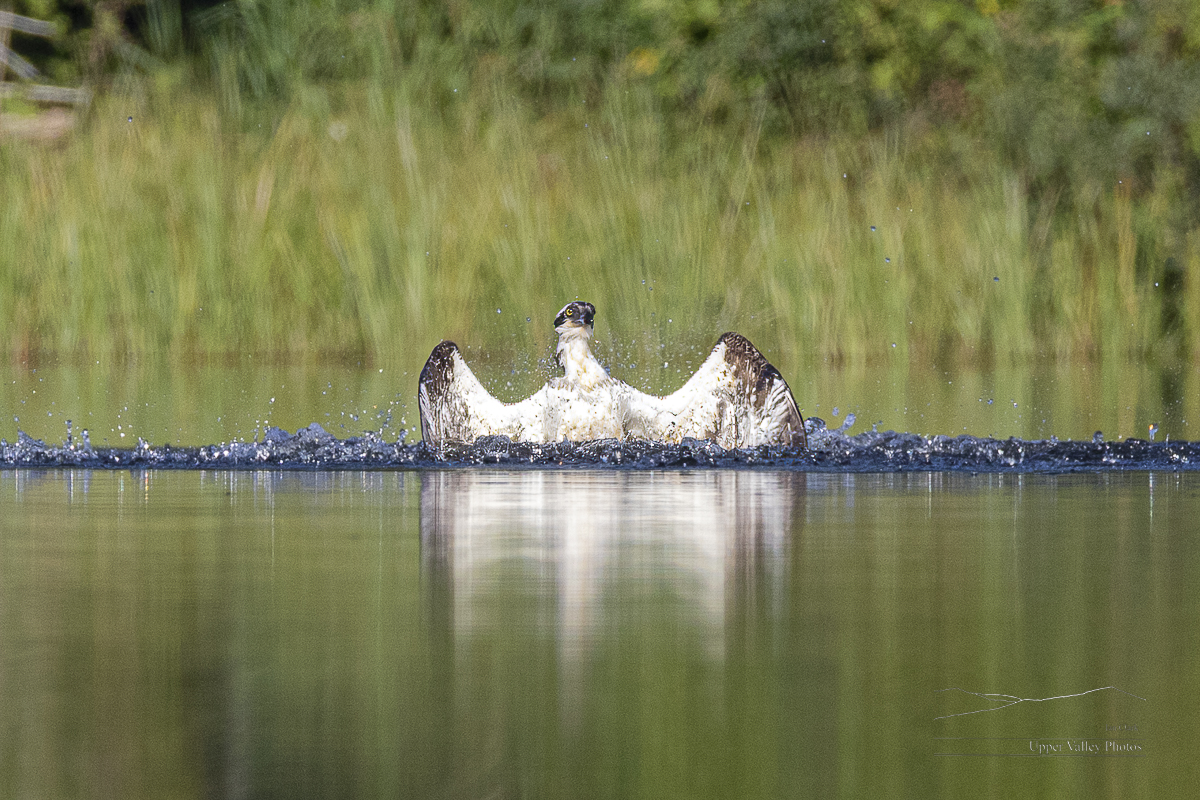

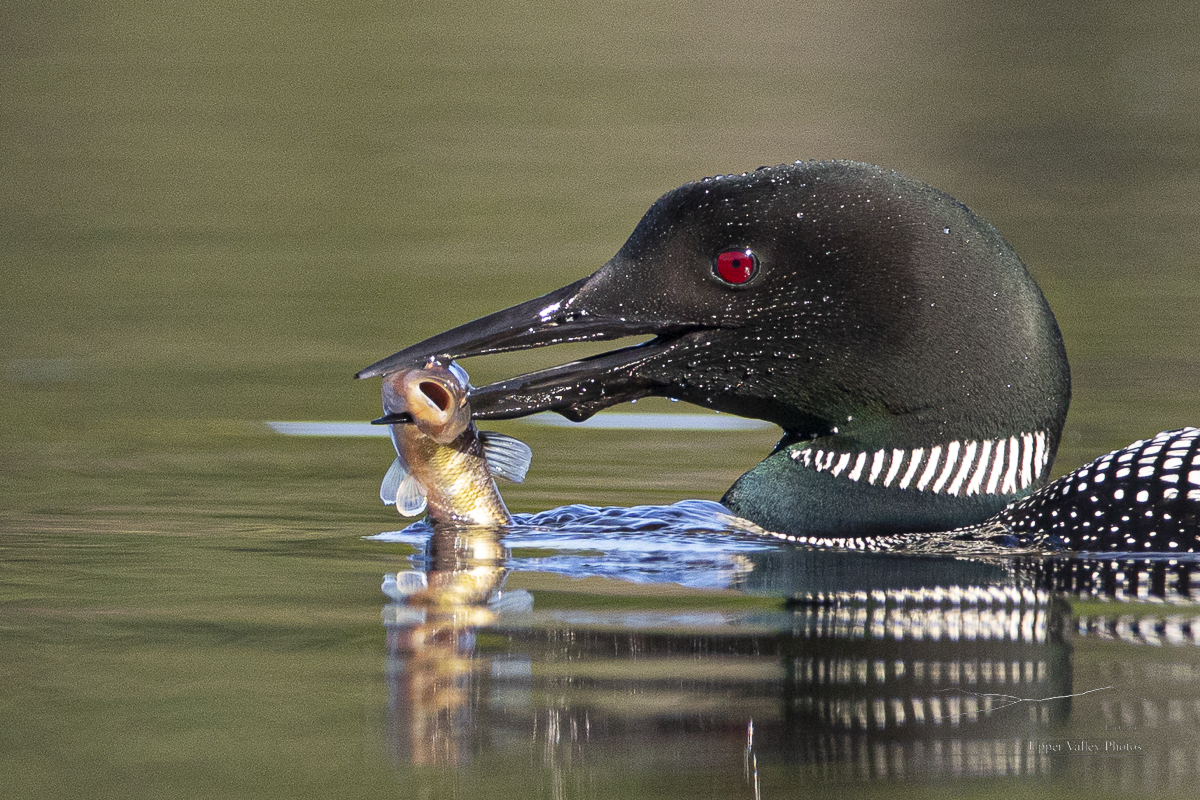
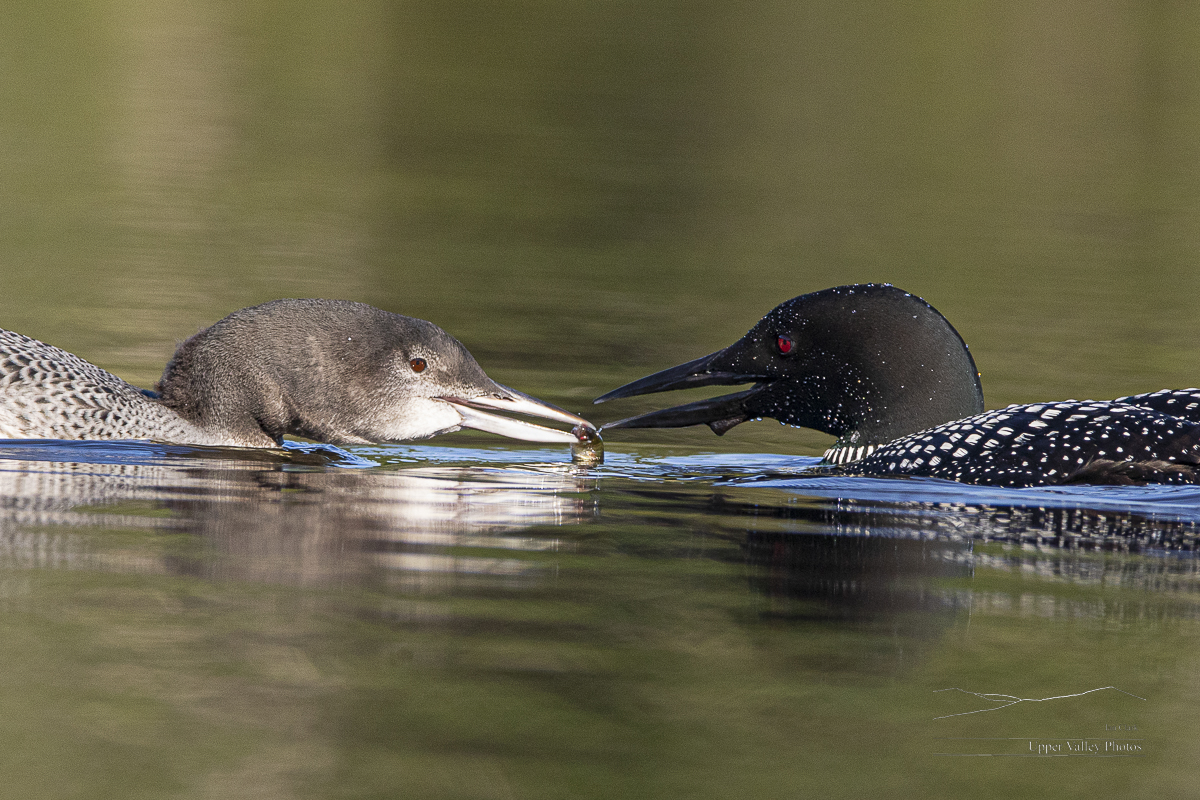

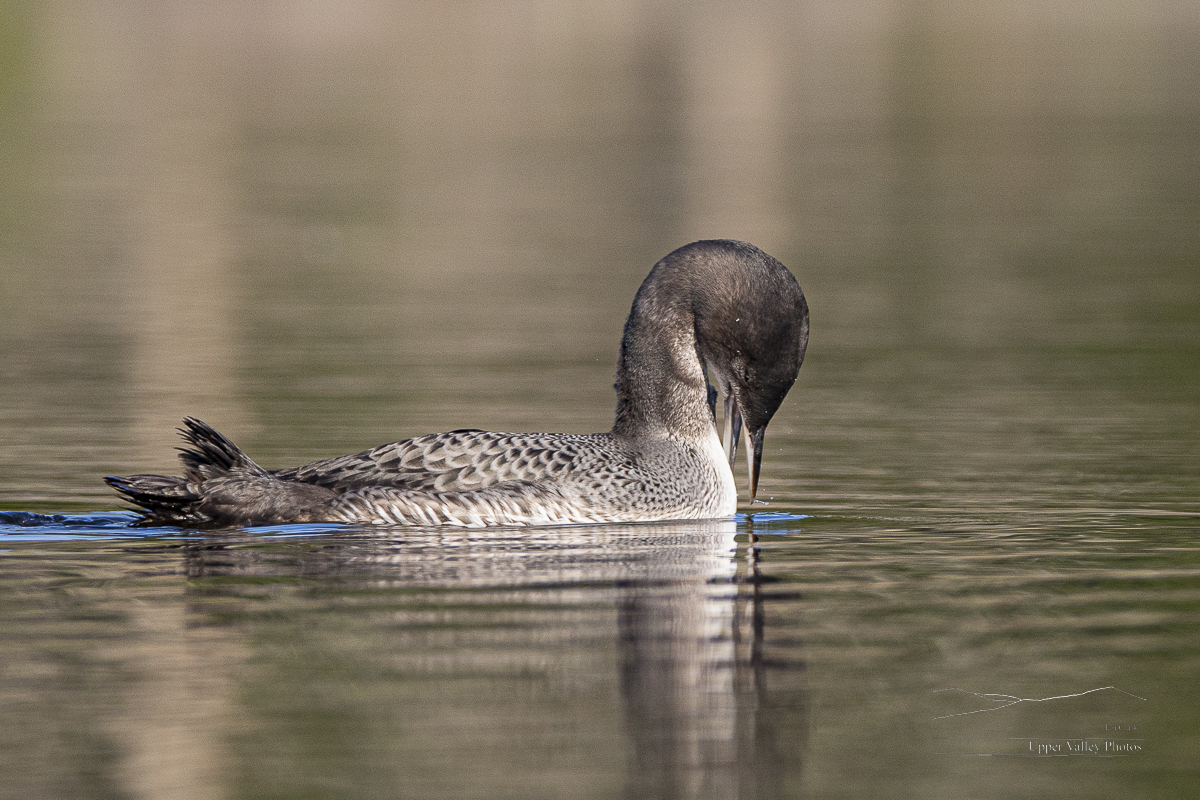



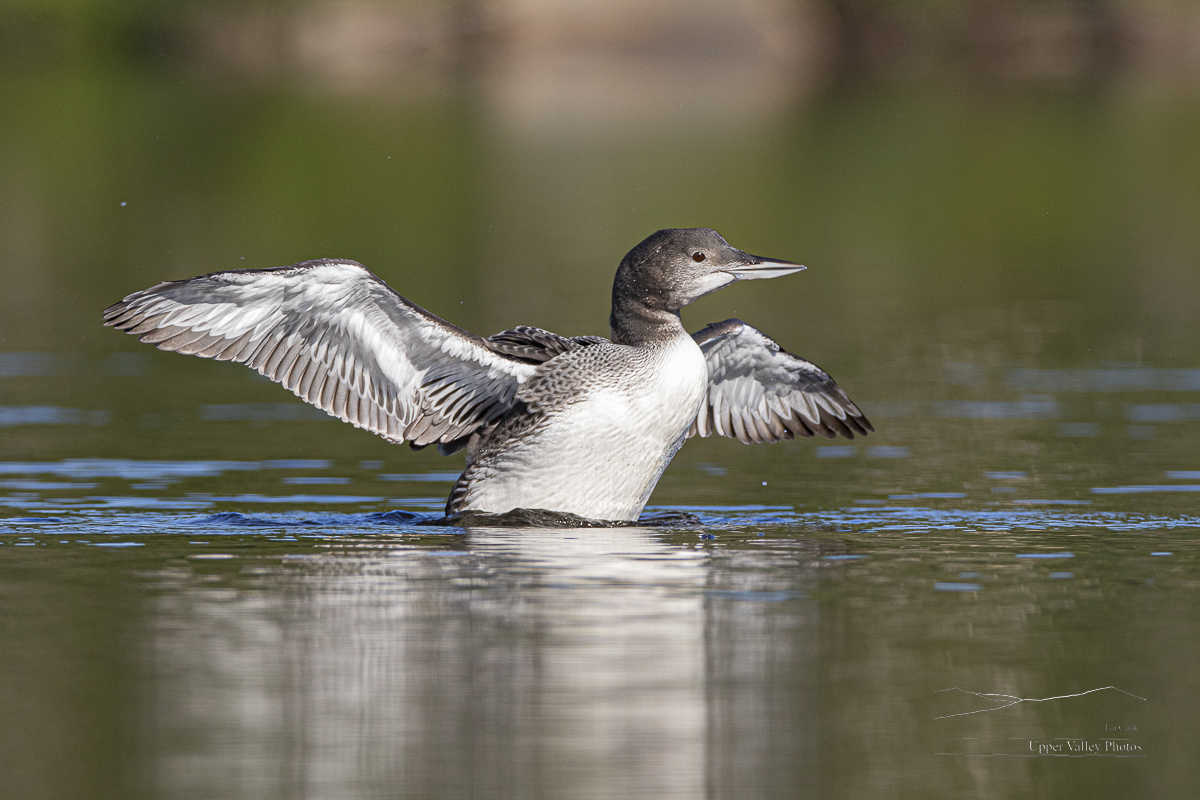
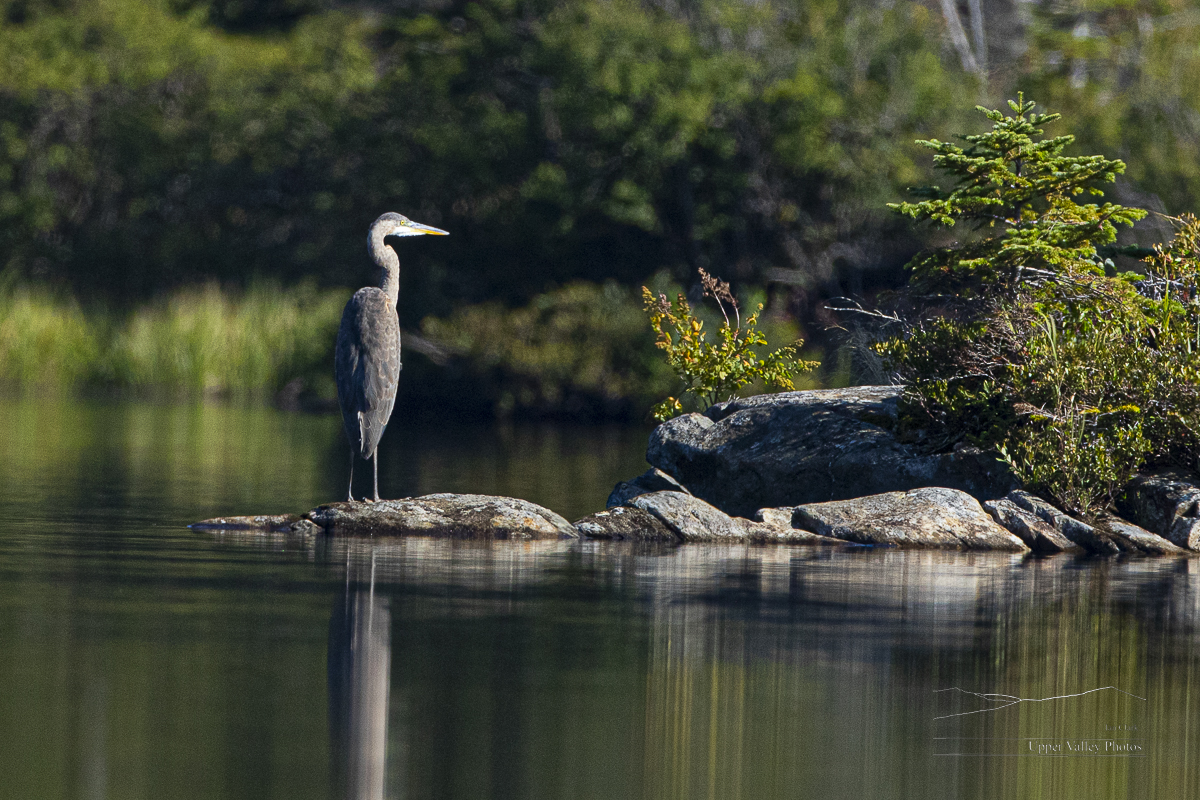
I’ll get out to check on our other families as promptly as I can, stay tuned!
A Peaceful Morning With The Loons, et al, June 8, 2022
Monday morning was a beautiful spring morning to visit the loons and friends. Provided one doesn’t object to paddling about in 42° weather. Let’s see what I found.
The Adirondack Loon Center is raffling off a Hornbeck Canoe to raise funds for loon preservation in the Adirondacks. Hornbeck boats are beautiful, very light weight boats, worth taking a look.

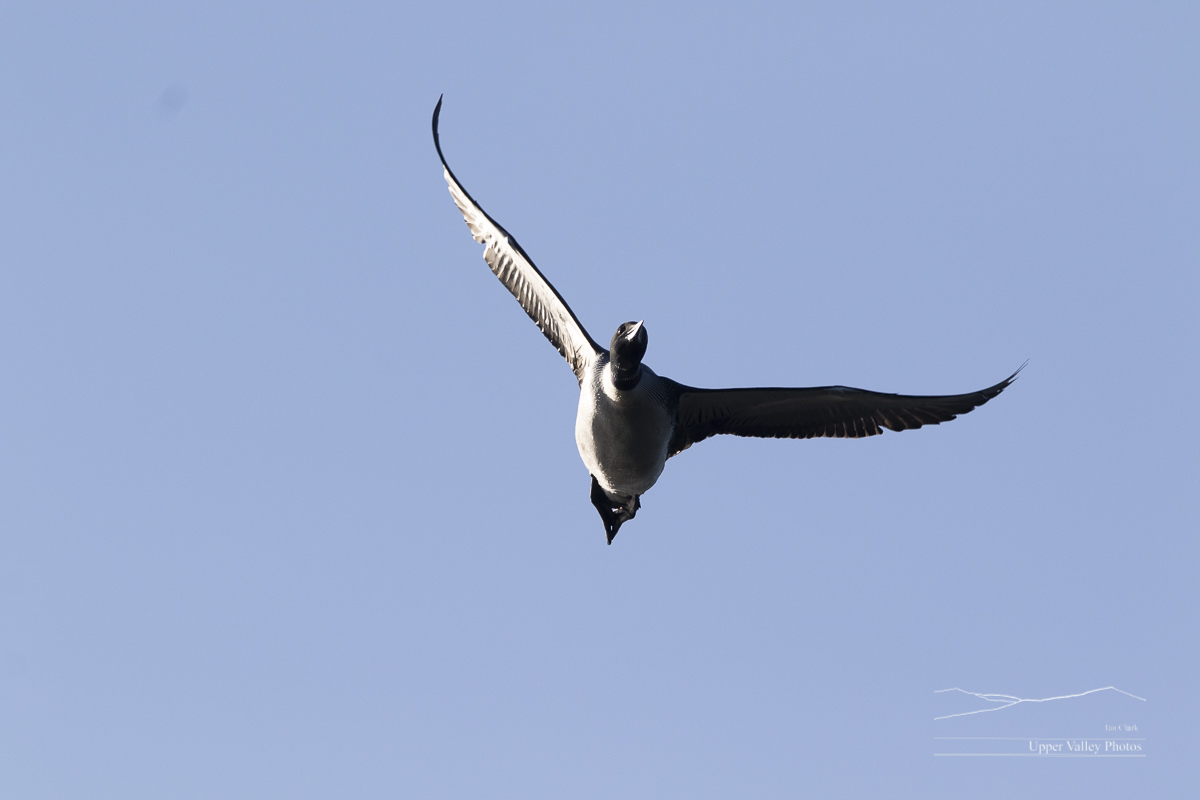
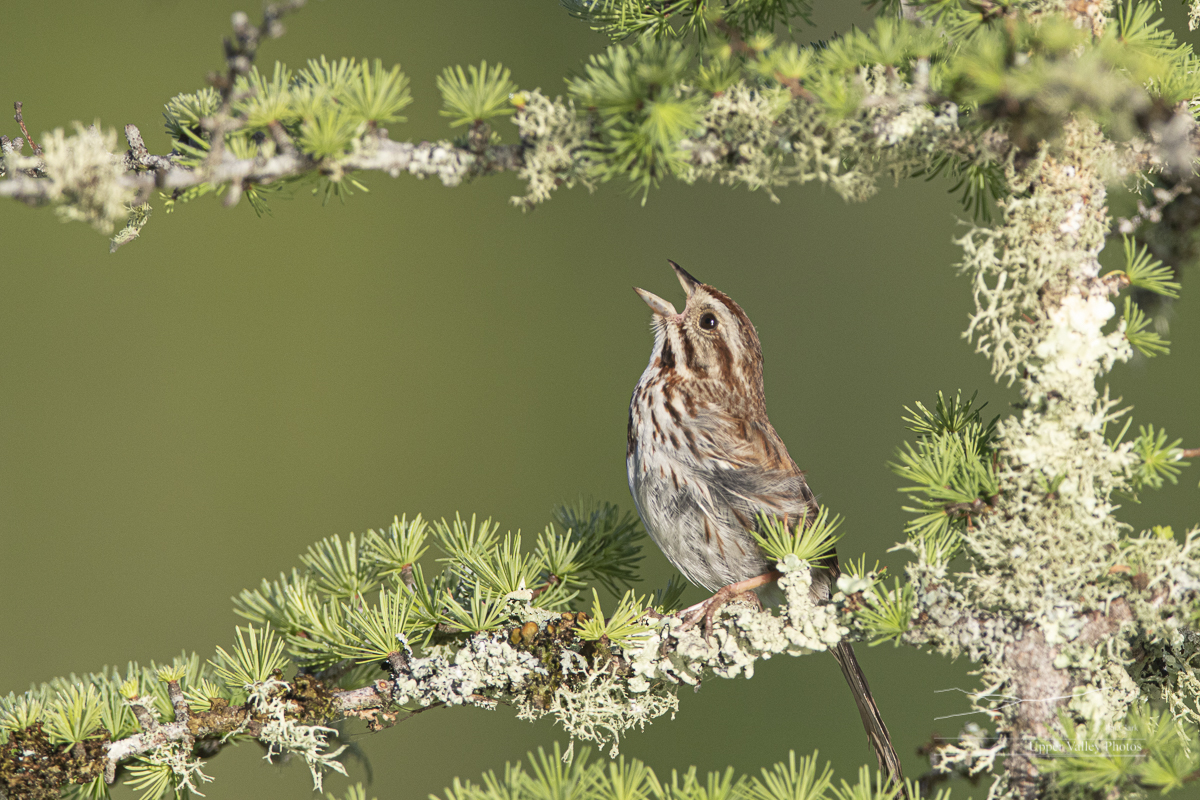
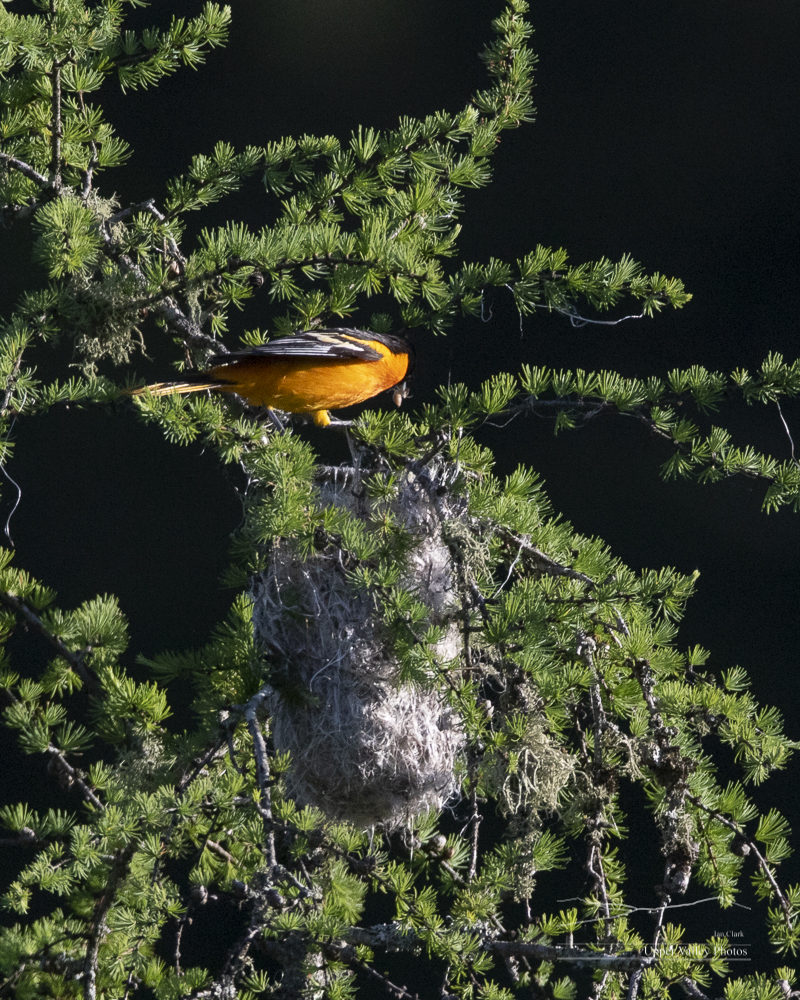
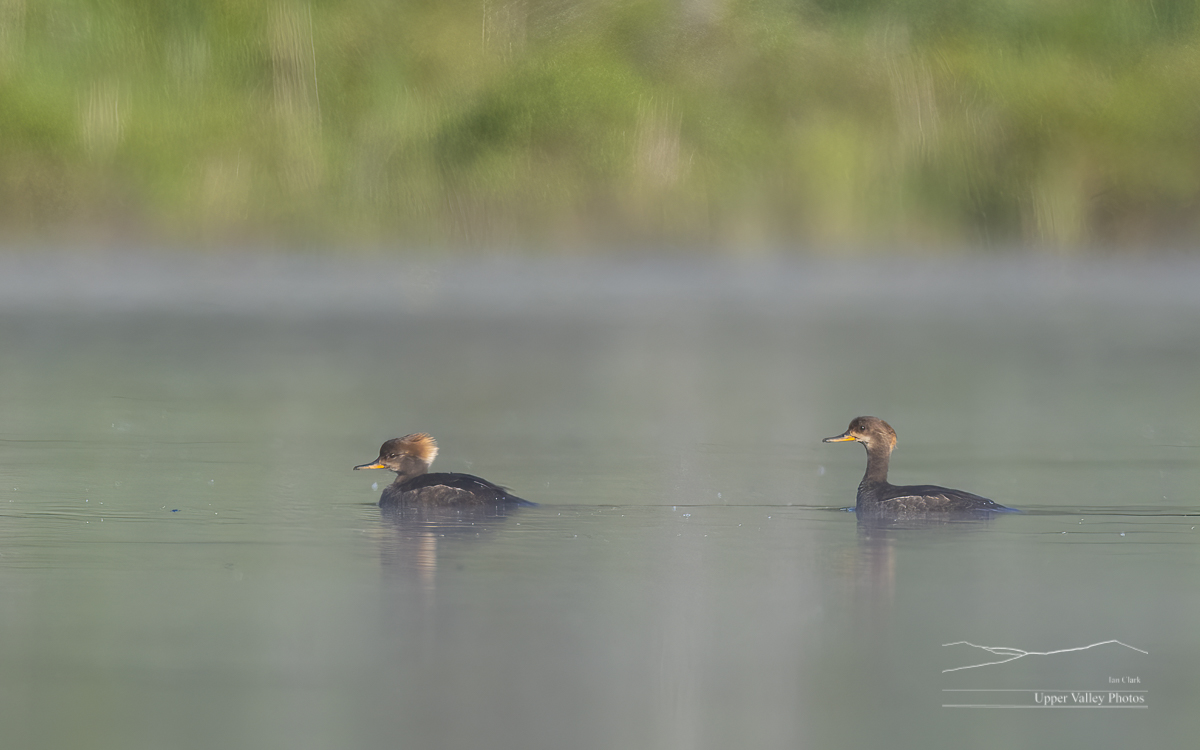
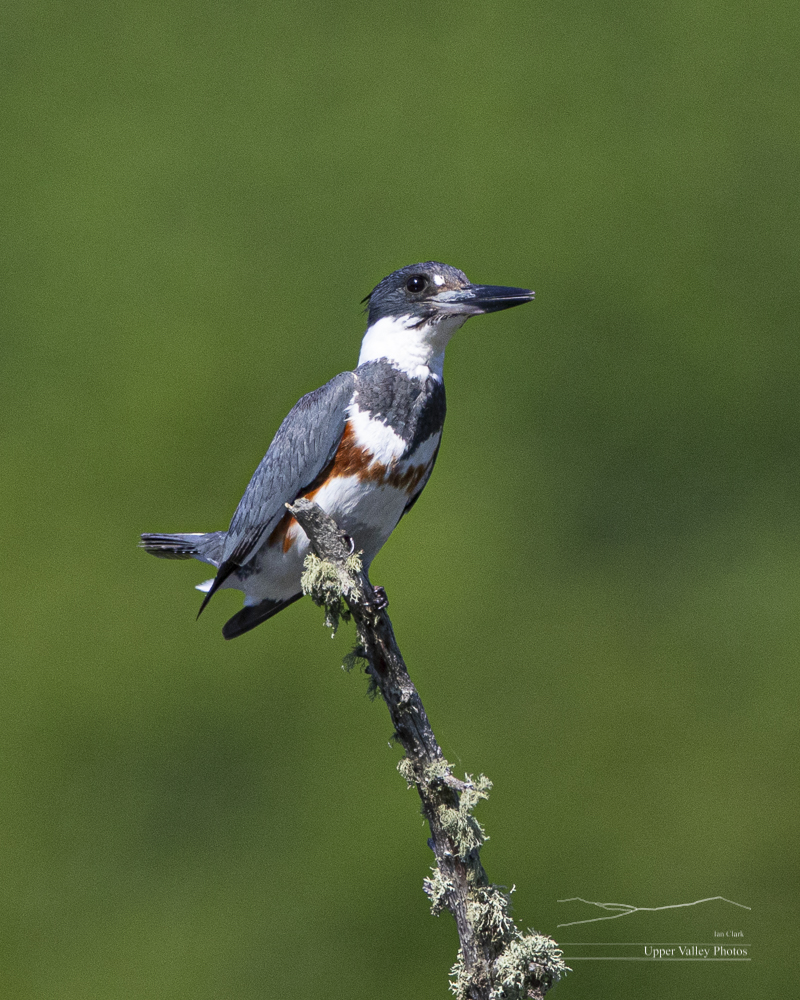

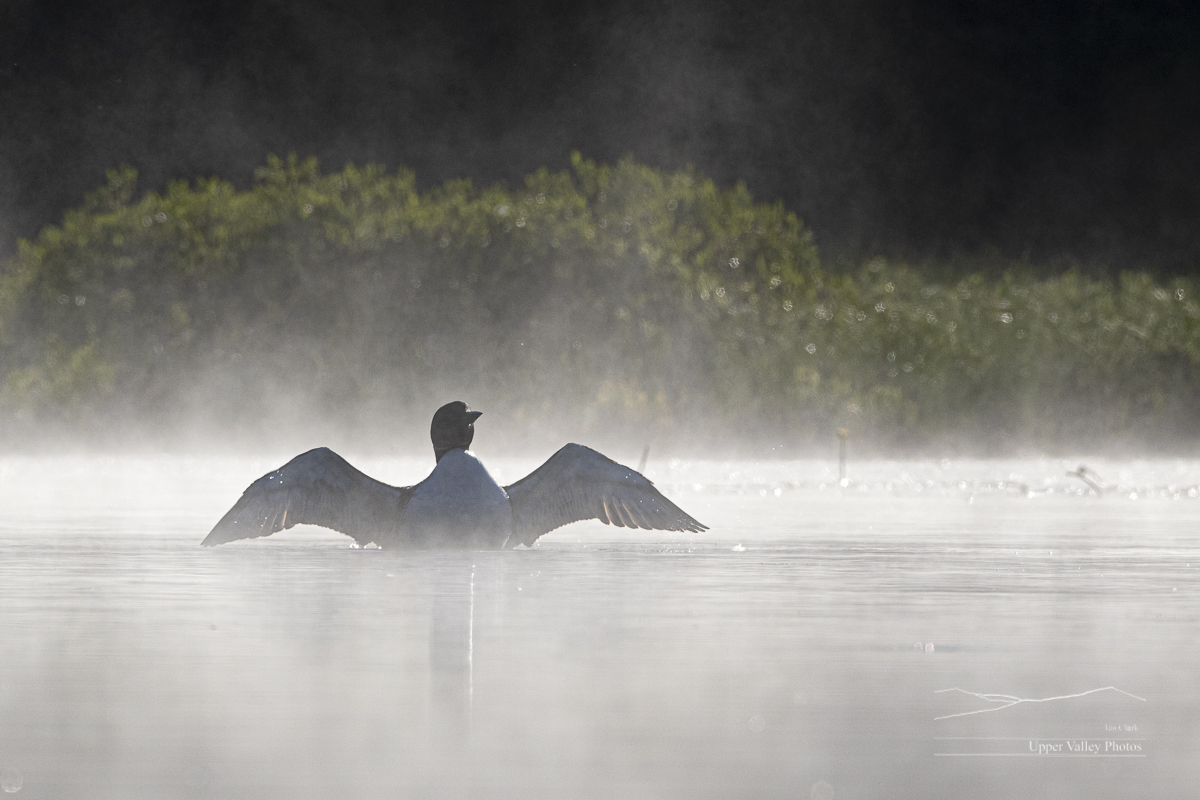

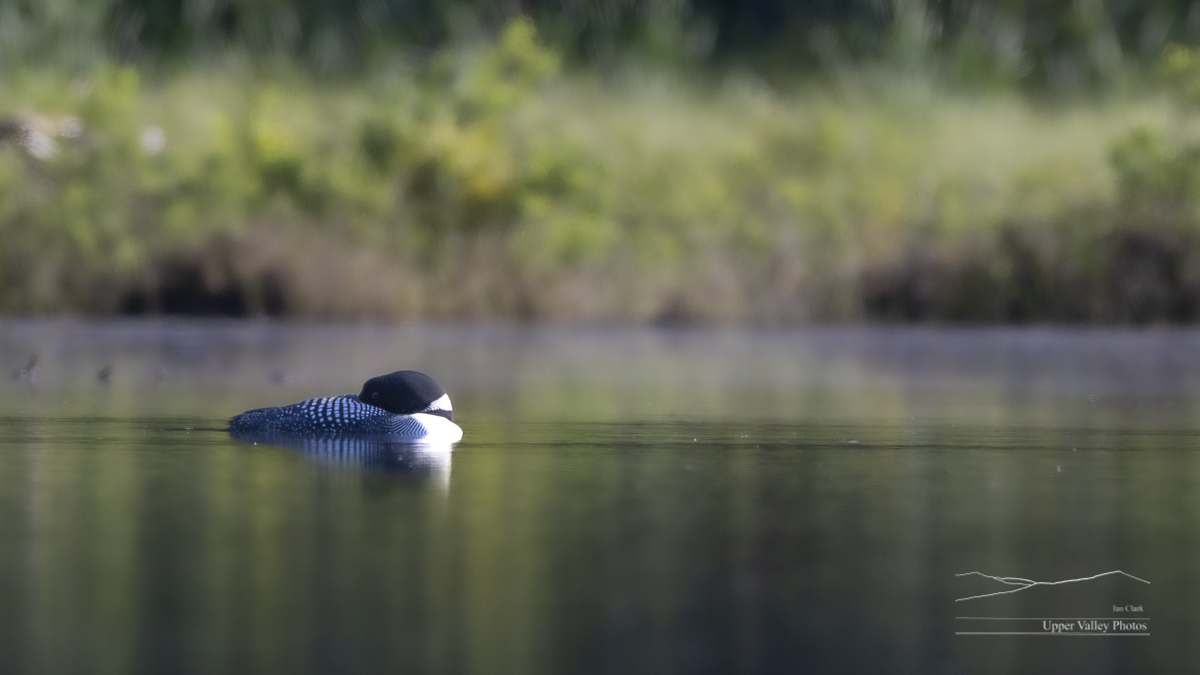
Toadapalooza! Toad Mating Season Is Here
Spring takes a while coming to the North Country. A couple of pretty good signs that the risk of snow has passed is turtles coming out to bask in large numbers and American toads gathering to mate. I recently ran across a knot of about 200 toads getting together to find mates.
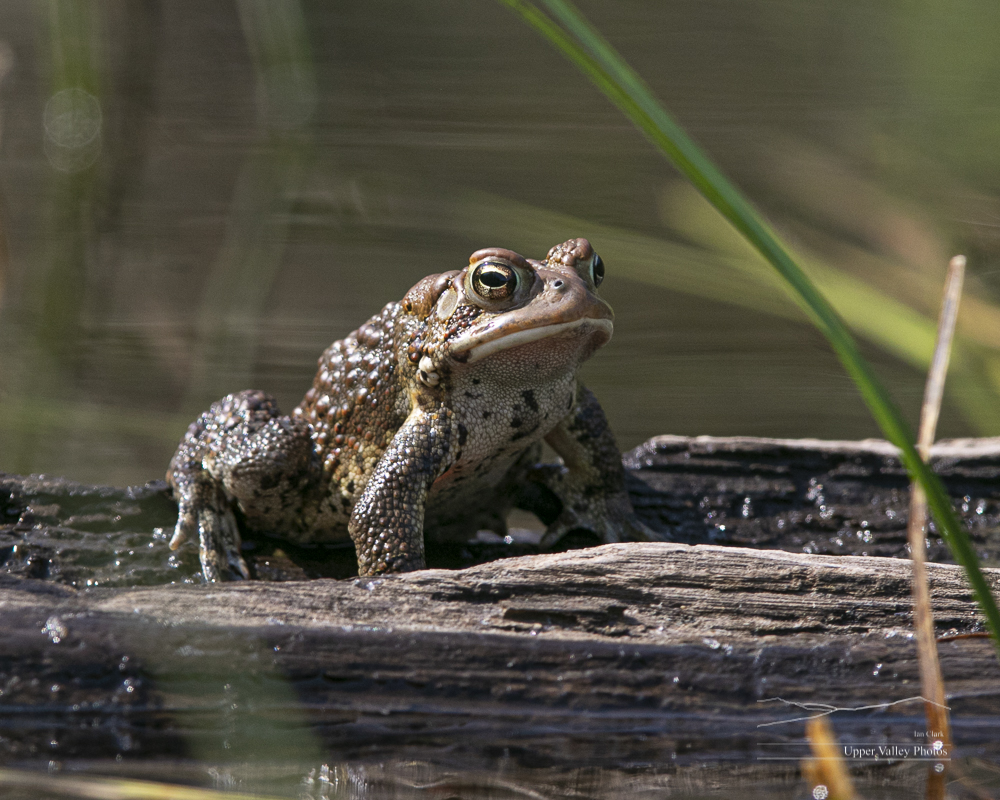
Many of my images are available as prints at: http://IanClark.com.

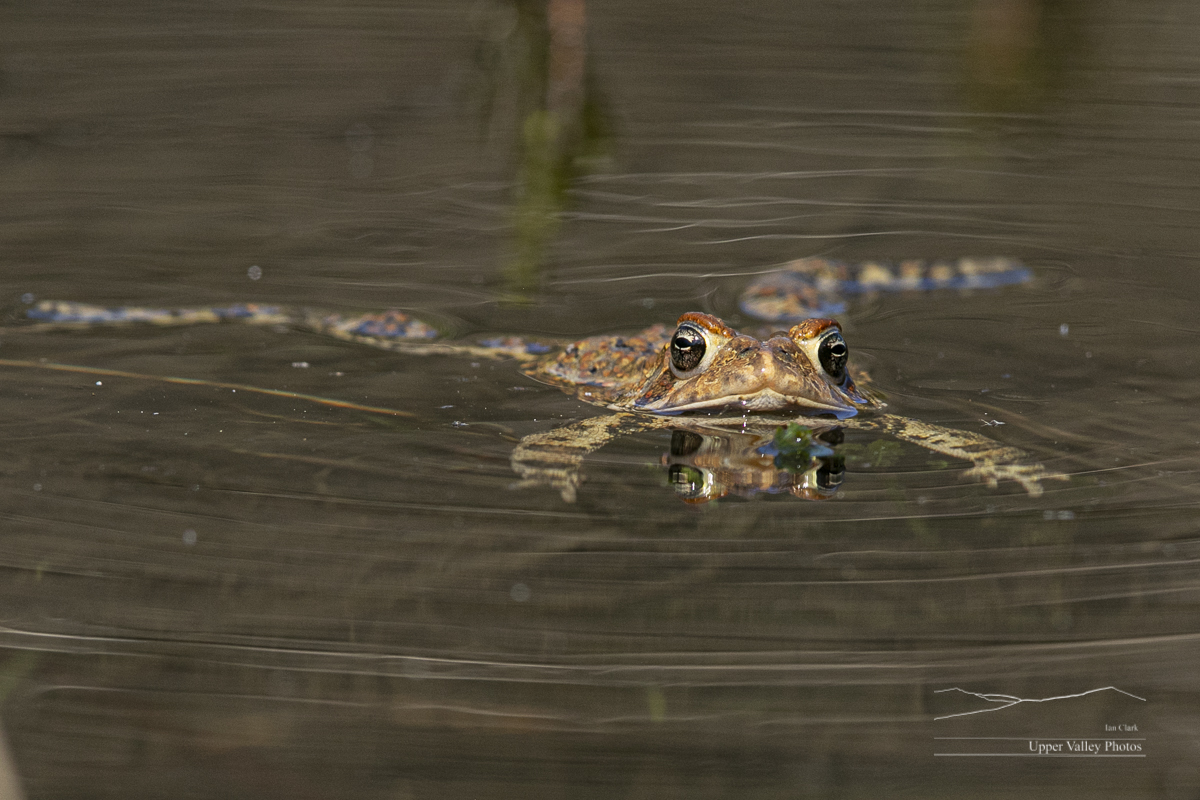
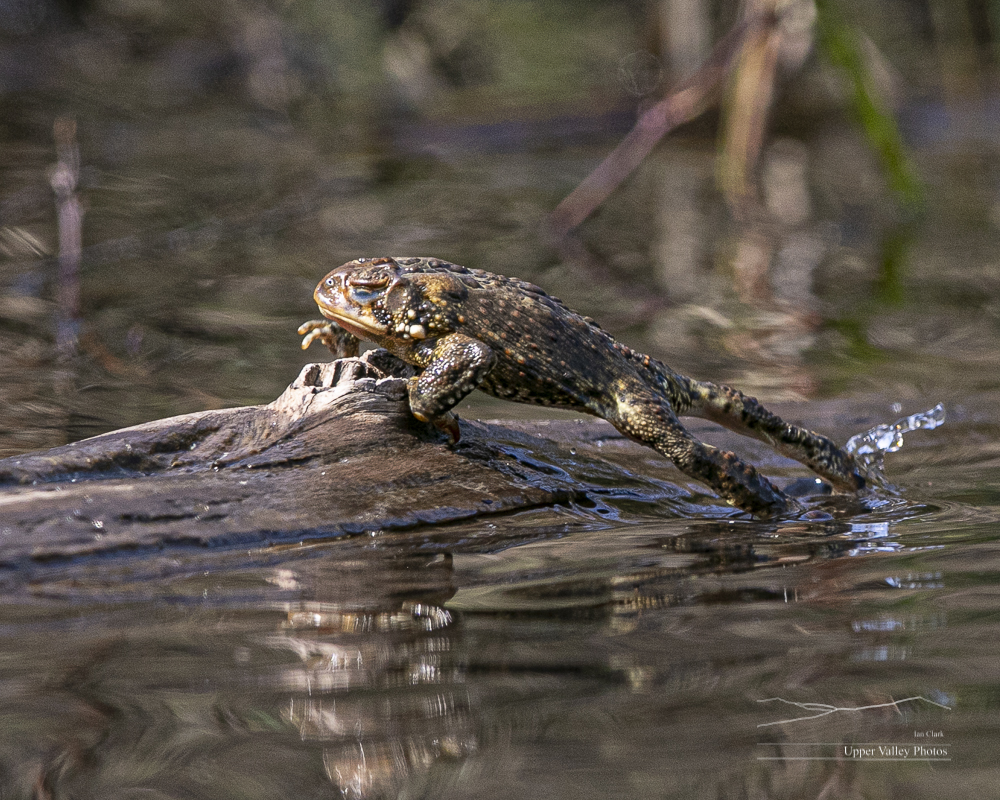

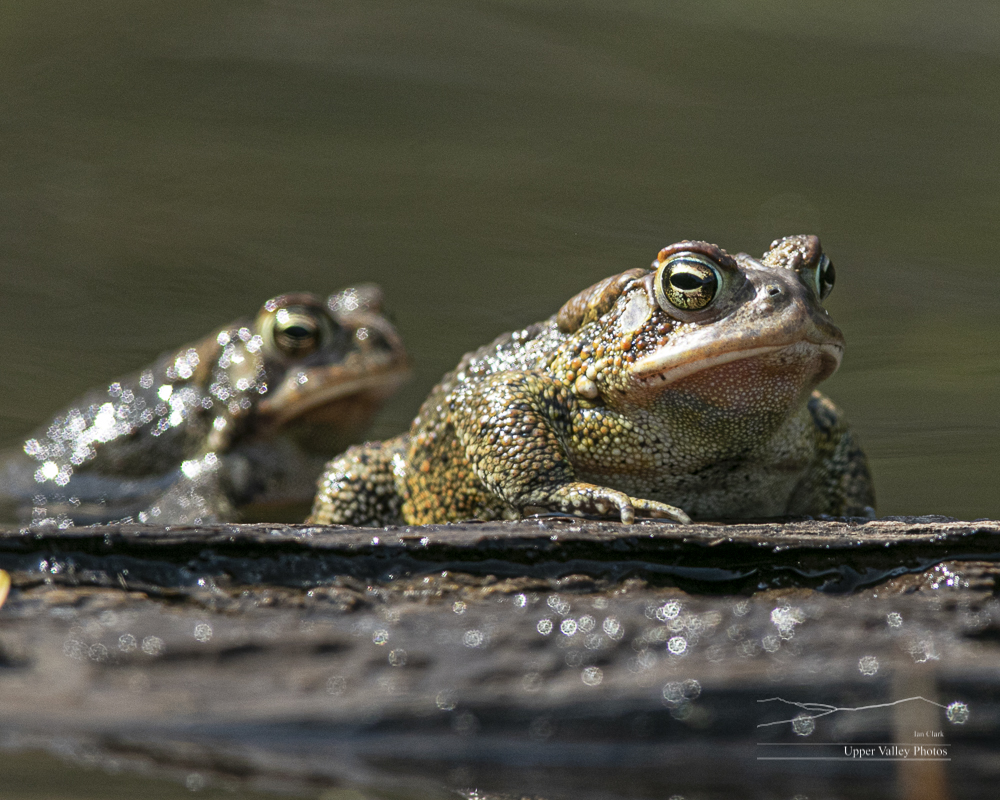

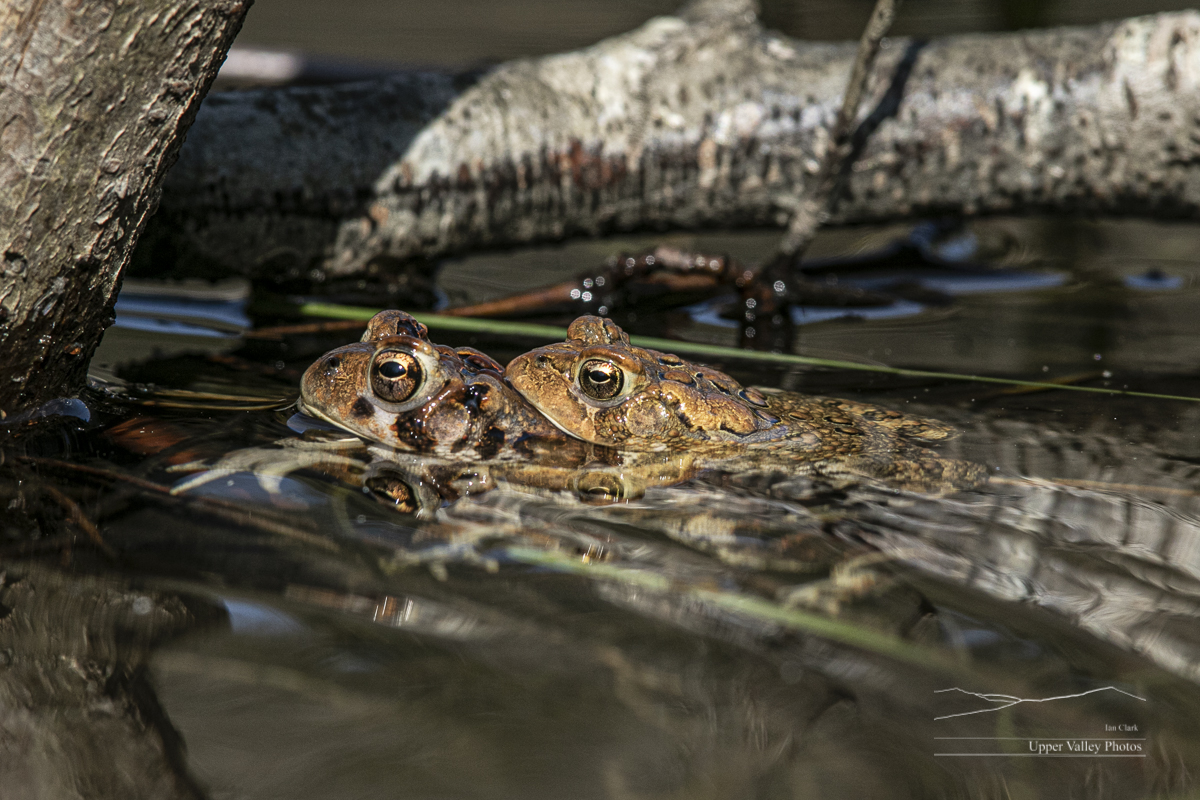

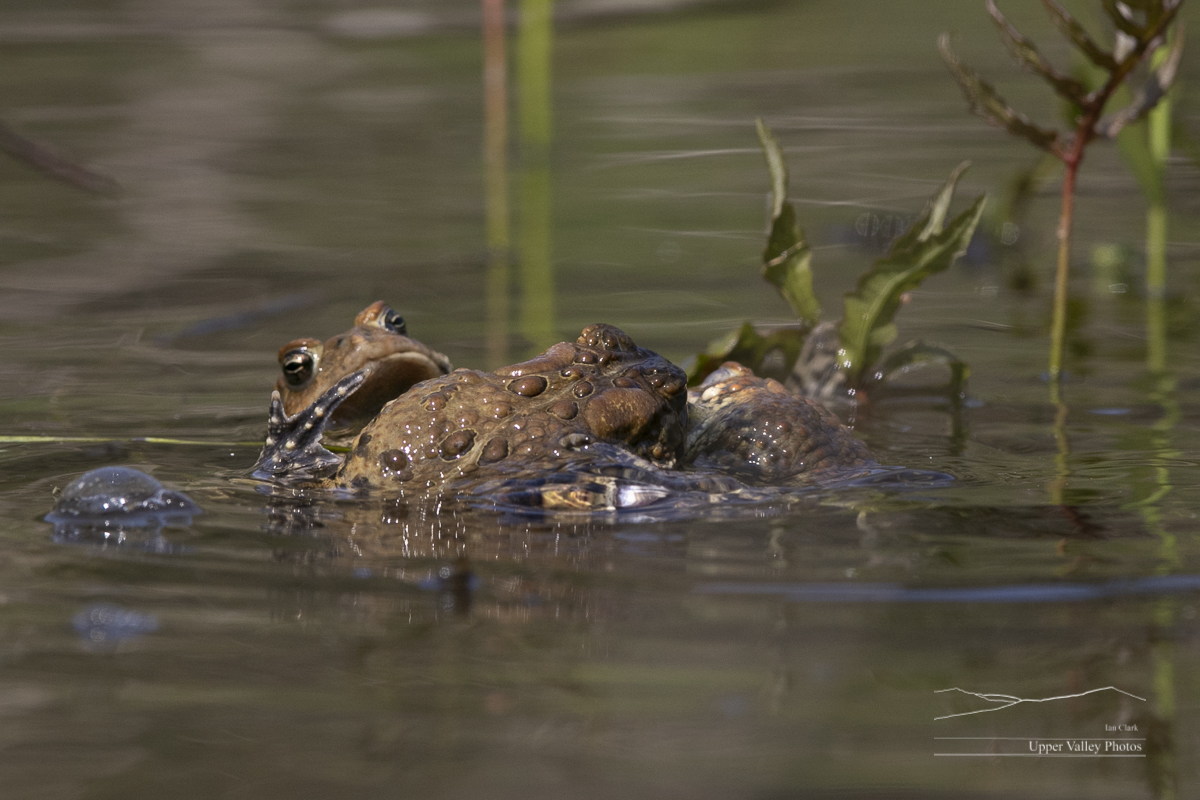

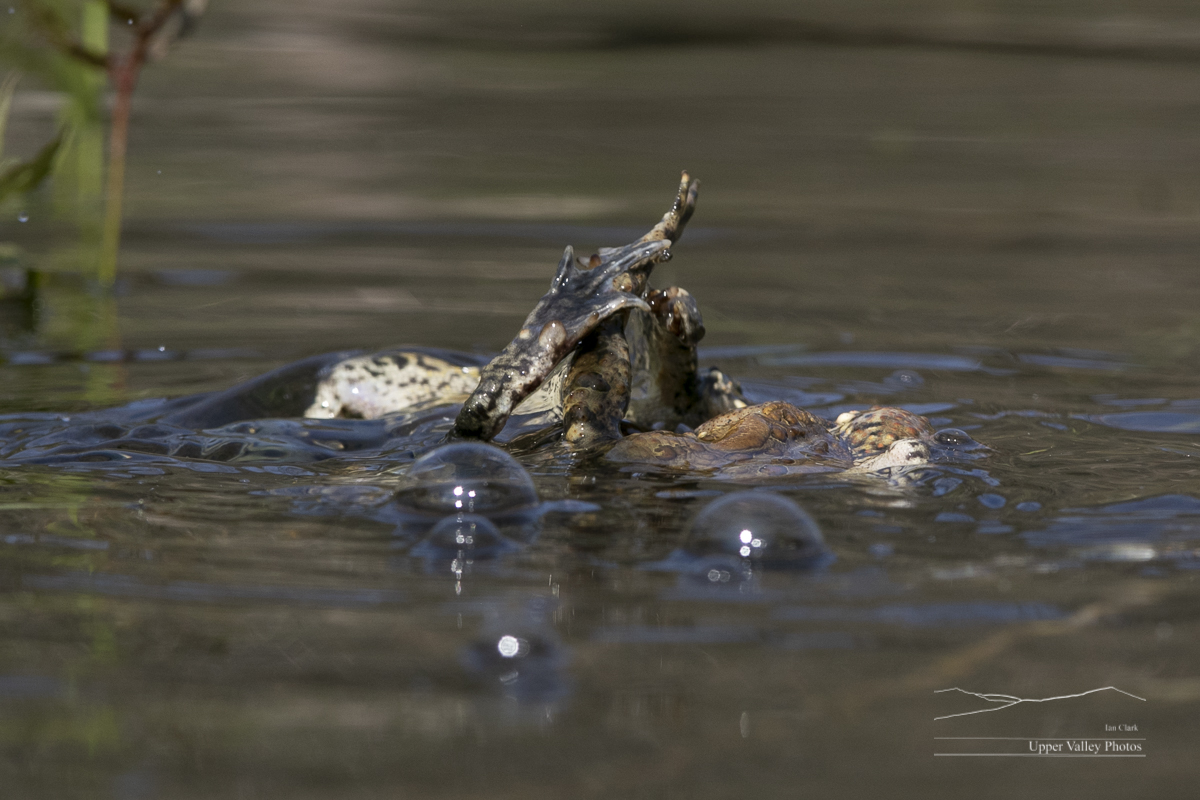
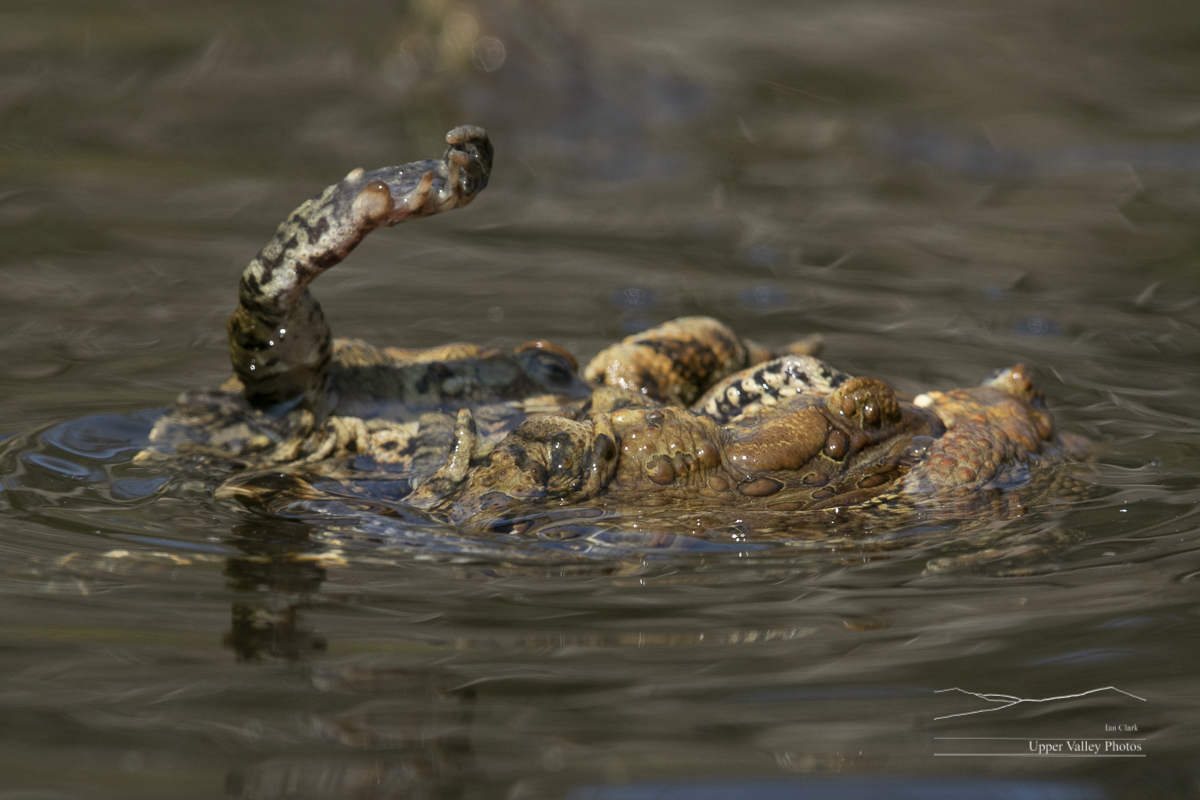
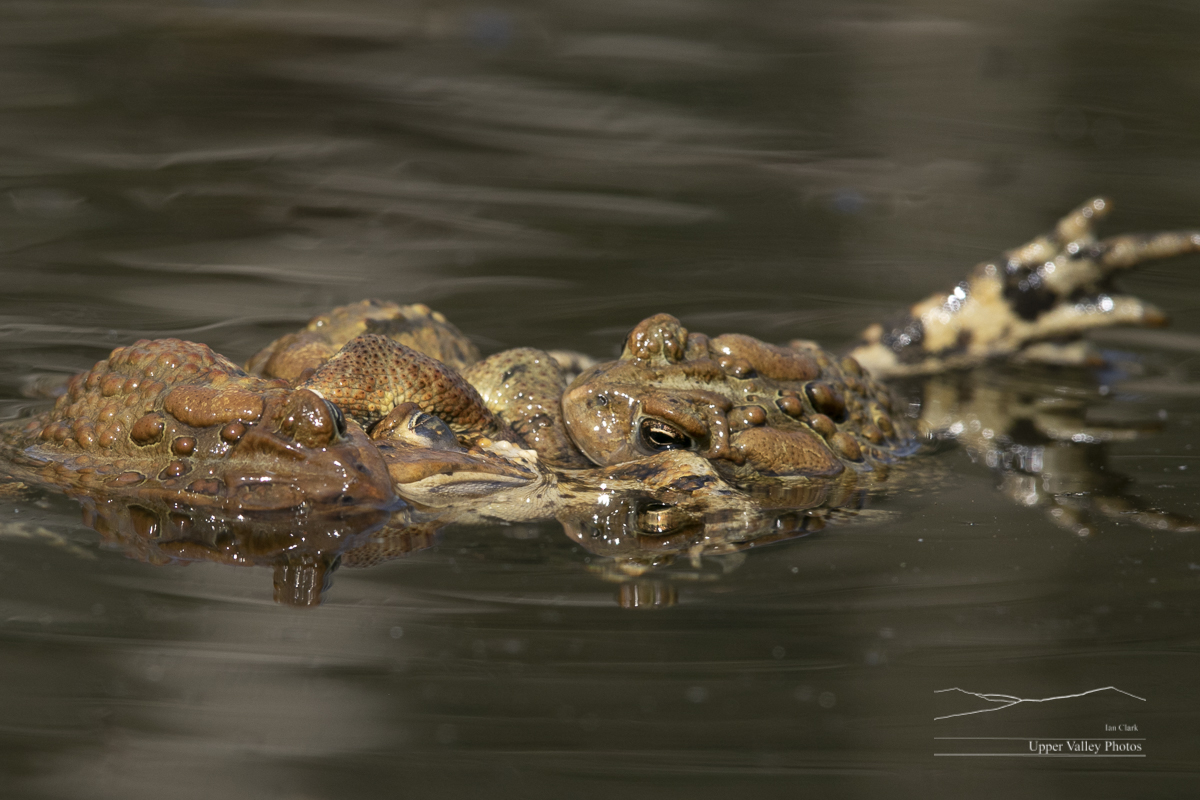
Turkey Shoot – Photographing Wild Turkeys
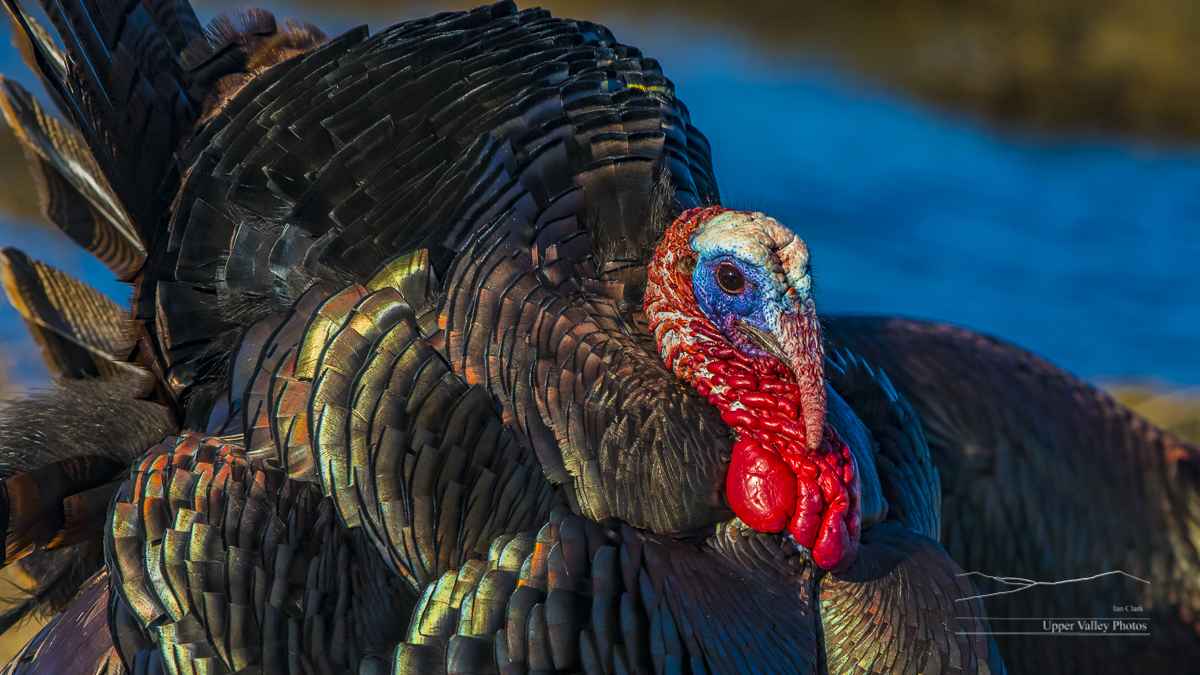


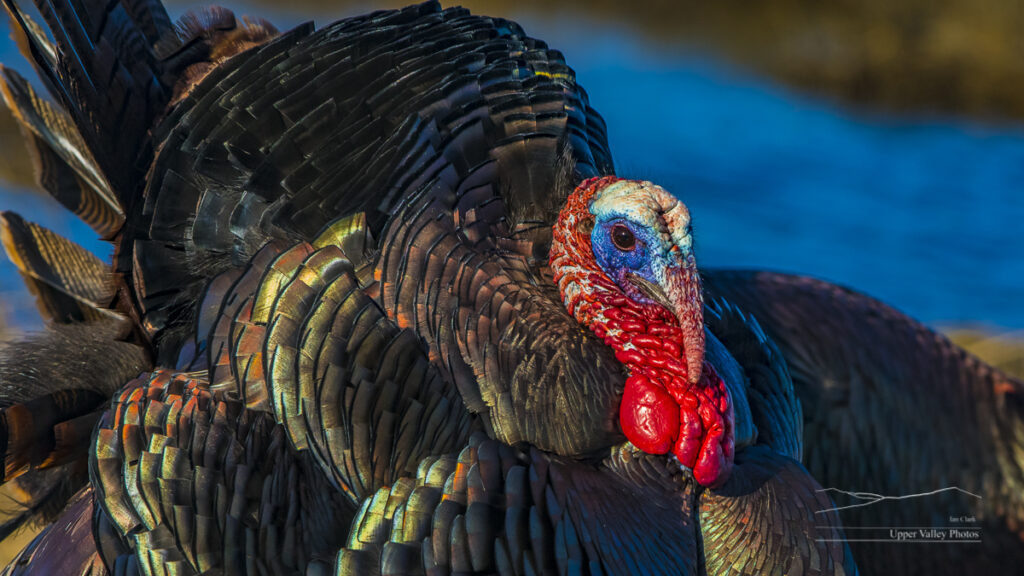

Wild turkeys are starting to strut here in Vermont. Strutting is a display by the males to attract the ladies. They’ll fan their tailfeathers and keep moving around to be in in front of the females. This is a great time to photograph them. Not only are the males showing their finery, but you’ll often see fights as the males try to drive each other away from the flock.
The light on turkeys makes or breaks the image. With low angle, early morning light, turkeys are iridescent and the male’s face and wattle are brightly colored. Wait a few minutes after sunup and they appear a drab brown. Shooting just after dawn is critical.
Finding turkeys is relatively easy. They’re sort creatures of habit. You’ll usually find a flock working through the same field(s) every morning. They roost in trees come dusk. You can hike along the edge of the field you’re planning to shoot the evening before to see where they’re roosting to give you an edge the next morning.
Turkeys are hunted regularly and are very wary of people. For the best photos, you’re going to need a blind. Fortunately, there are lots of blinds made for turkey hunters. They’re perfect for photography. If you have to hike in to your spot, a chair blind is easy to carry. If you’re shooting not far from your car, a larger tent style blind gives you more room. (Vermont is still chilly, having more room to pour some tea out of my Thermos is a big plus.)
You’ll want a relatively high, 1/1000th or faster, shutter speed to be ready when the kerfuffles start. Mounting your camera on a tripod with a ball or gimbal head saves the hassle of holding the camera and lets you pan to the action.
Be sure to check your local hunting laws, you don’t want to be in the field with hunters. If you’re on private land, you can usually coordinate with the landowner to keep you and the hunters apart.
So, get out and get some turkey pix. If you’re timing it right, you’ll be home early enough for a good breakfast.
